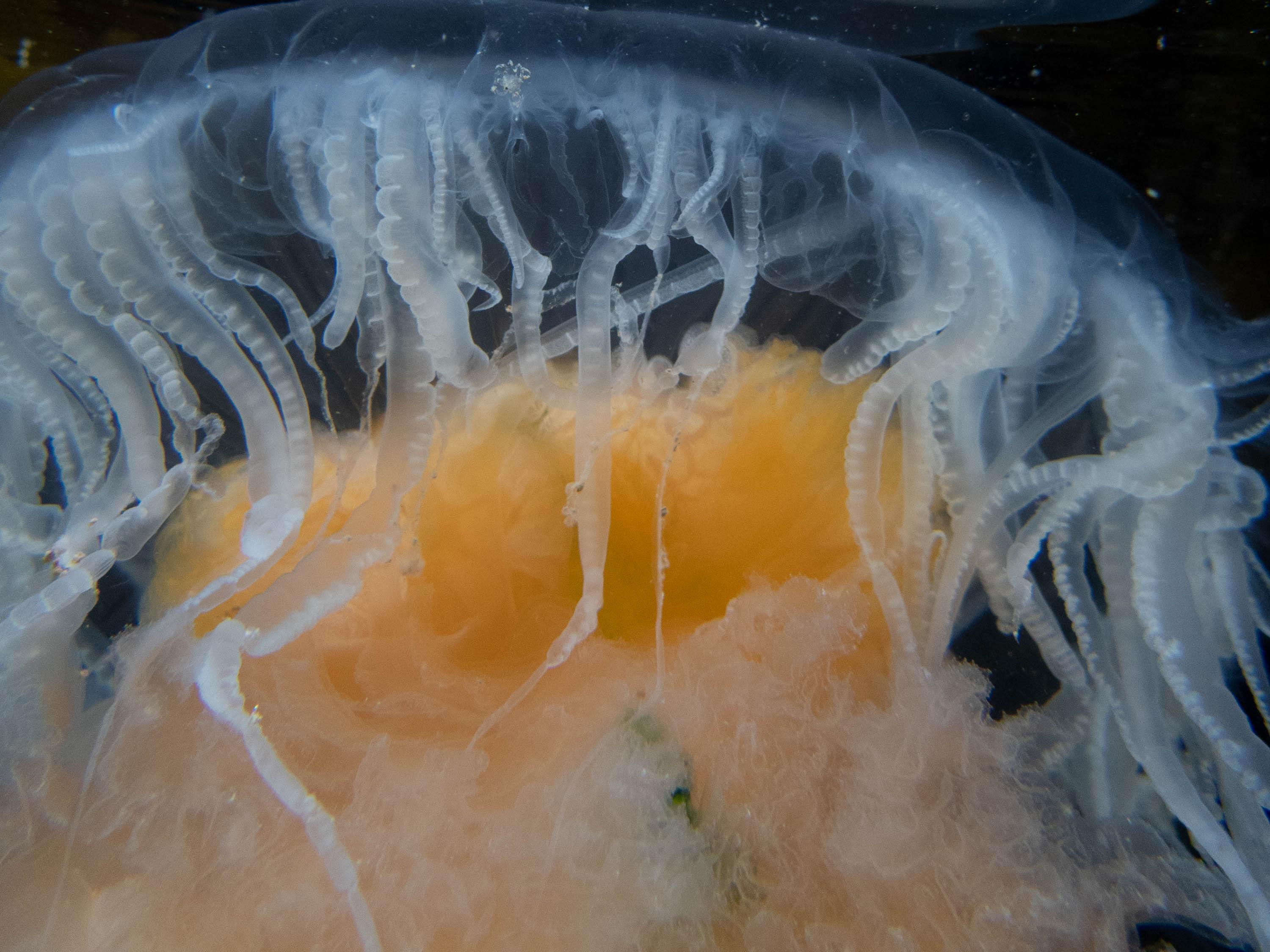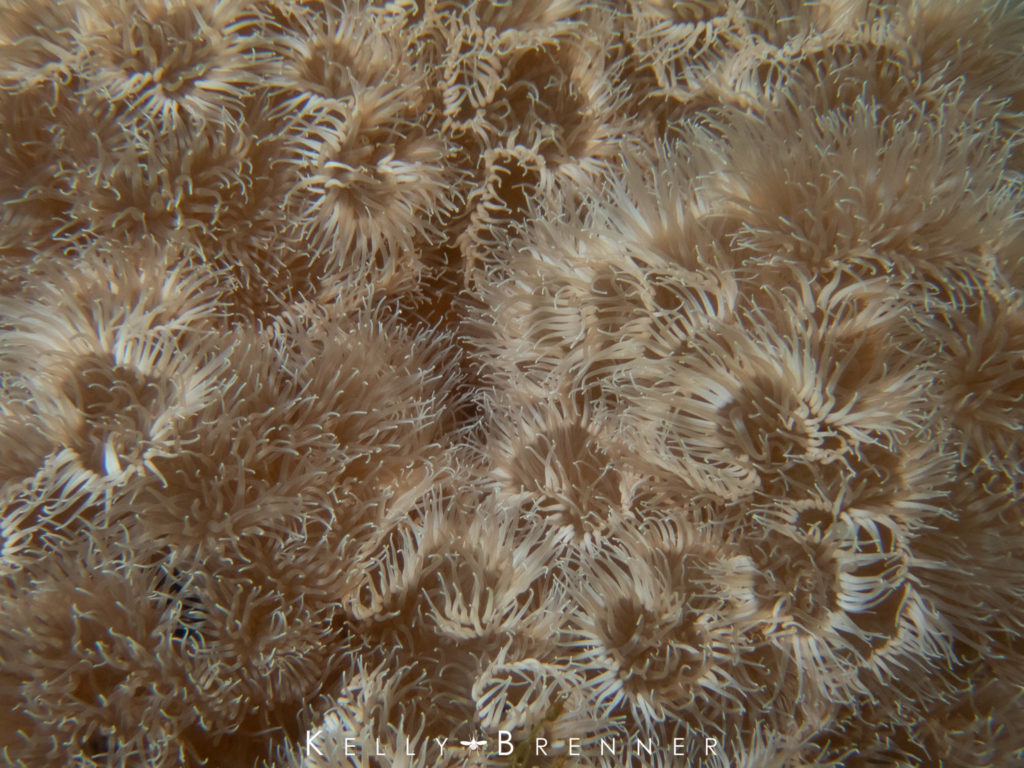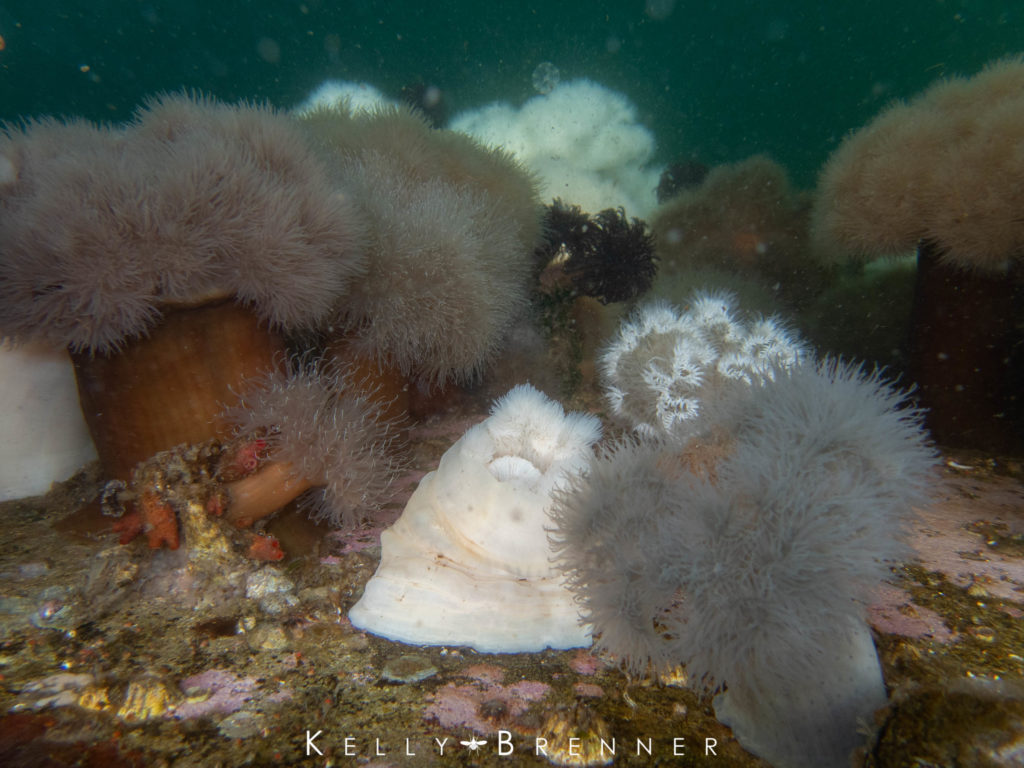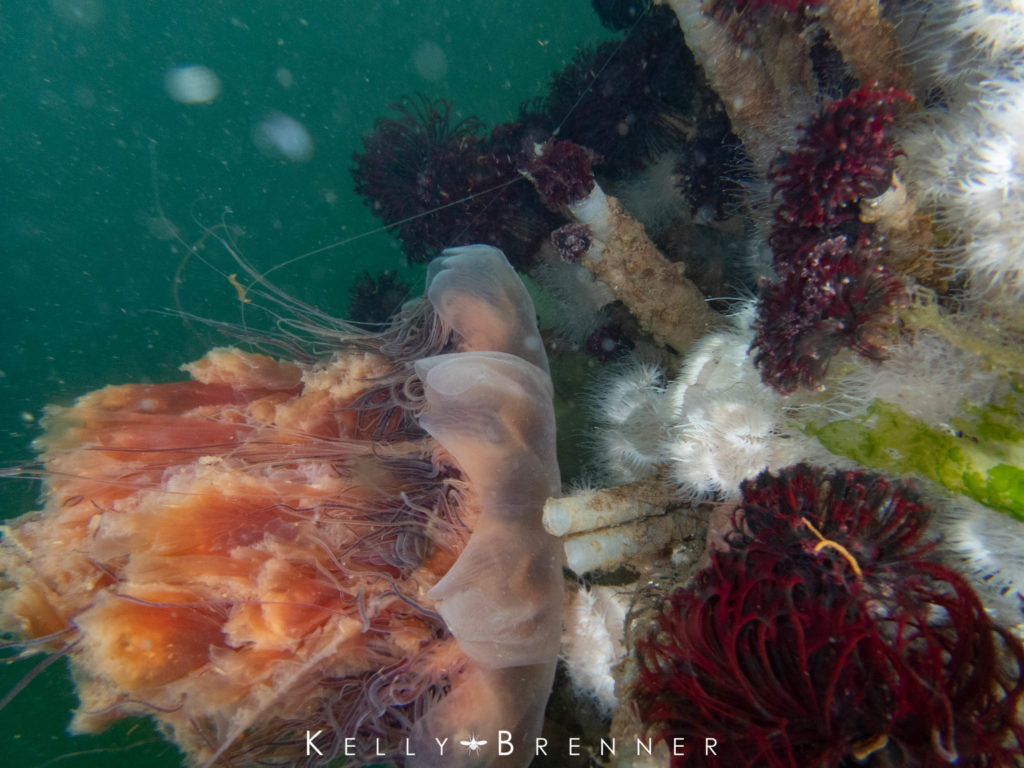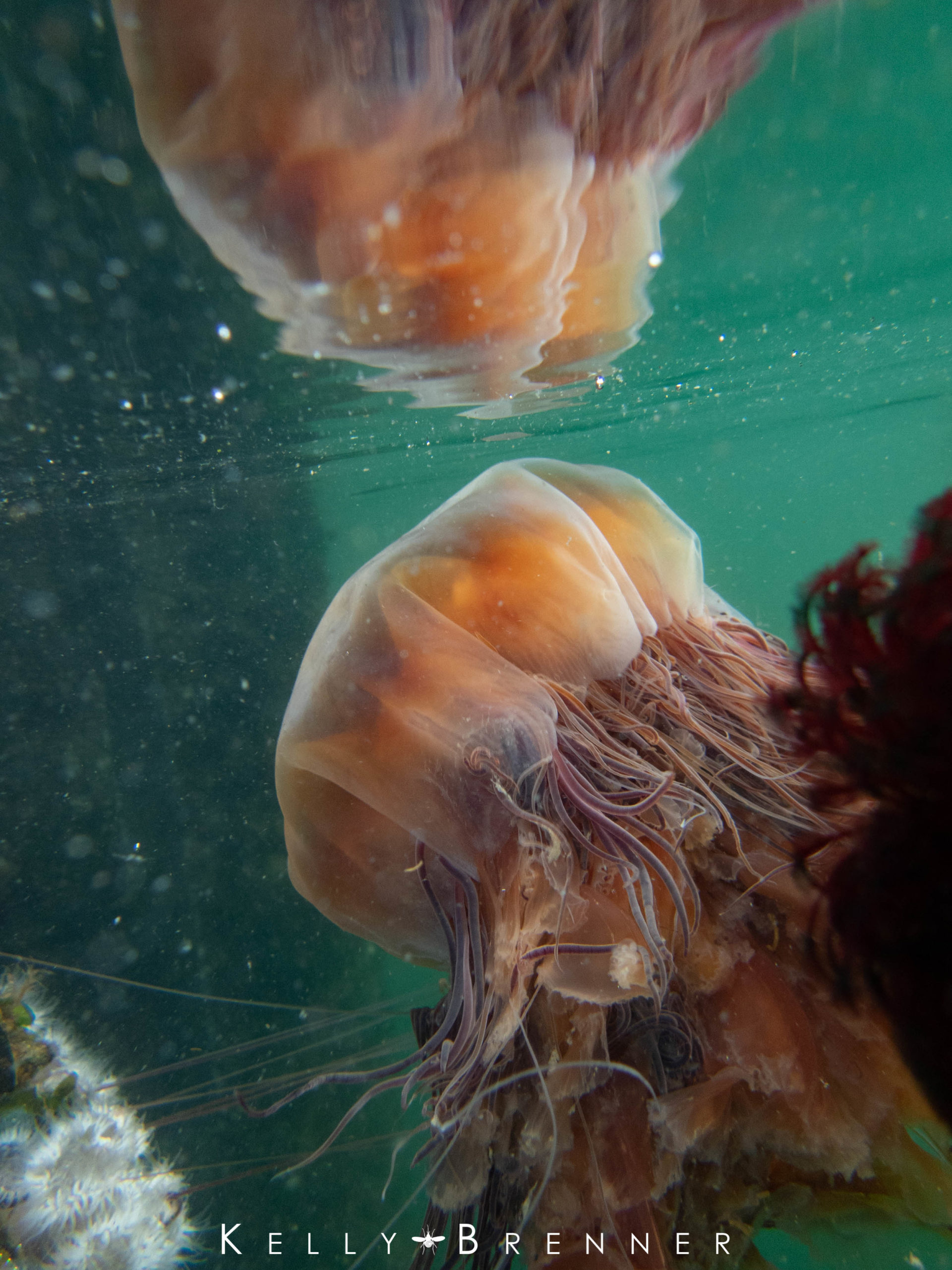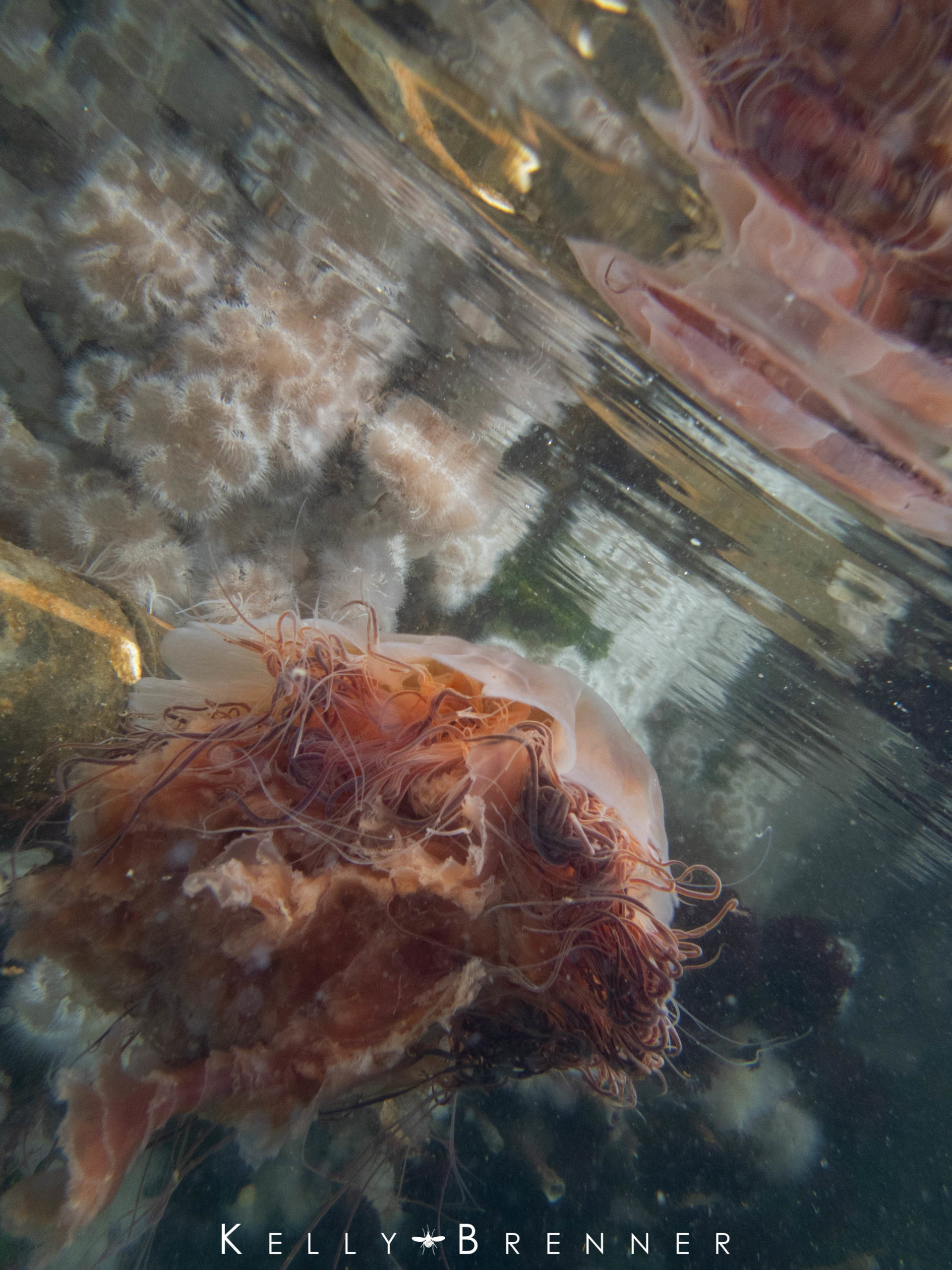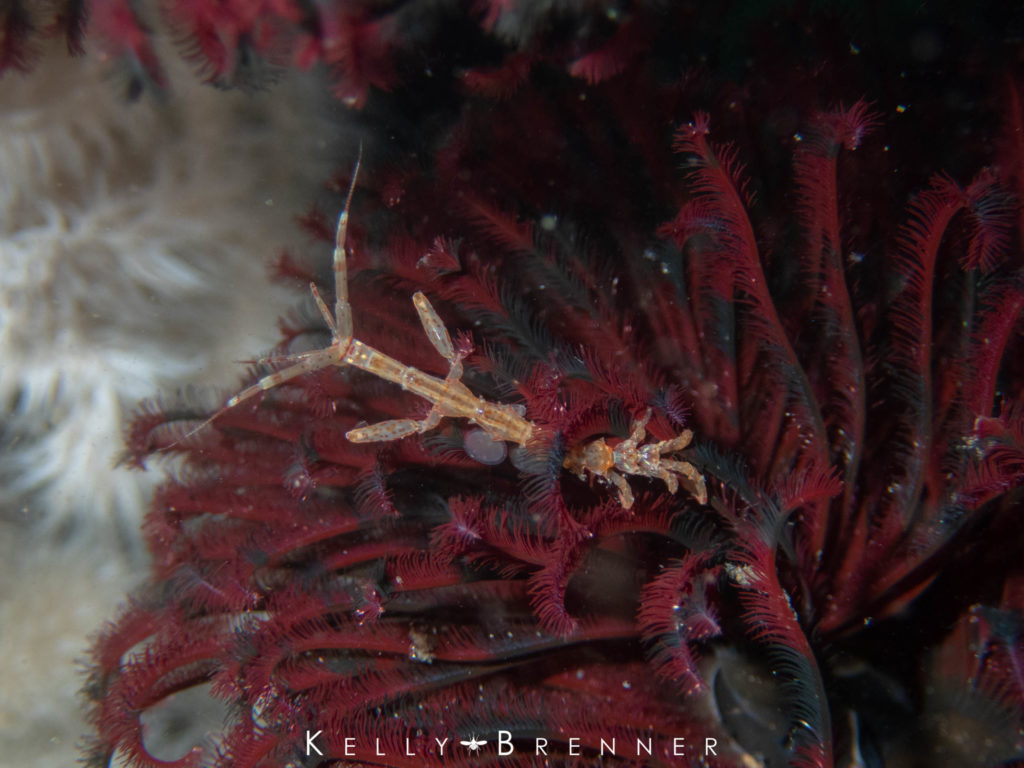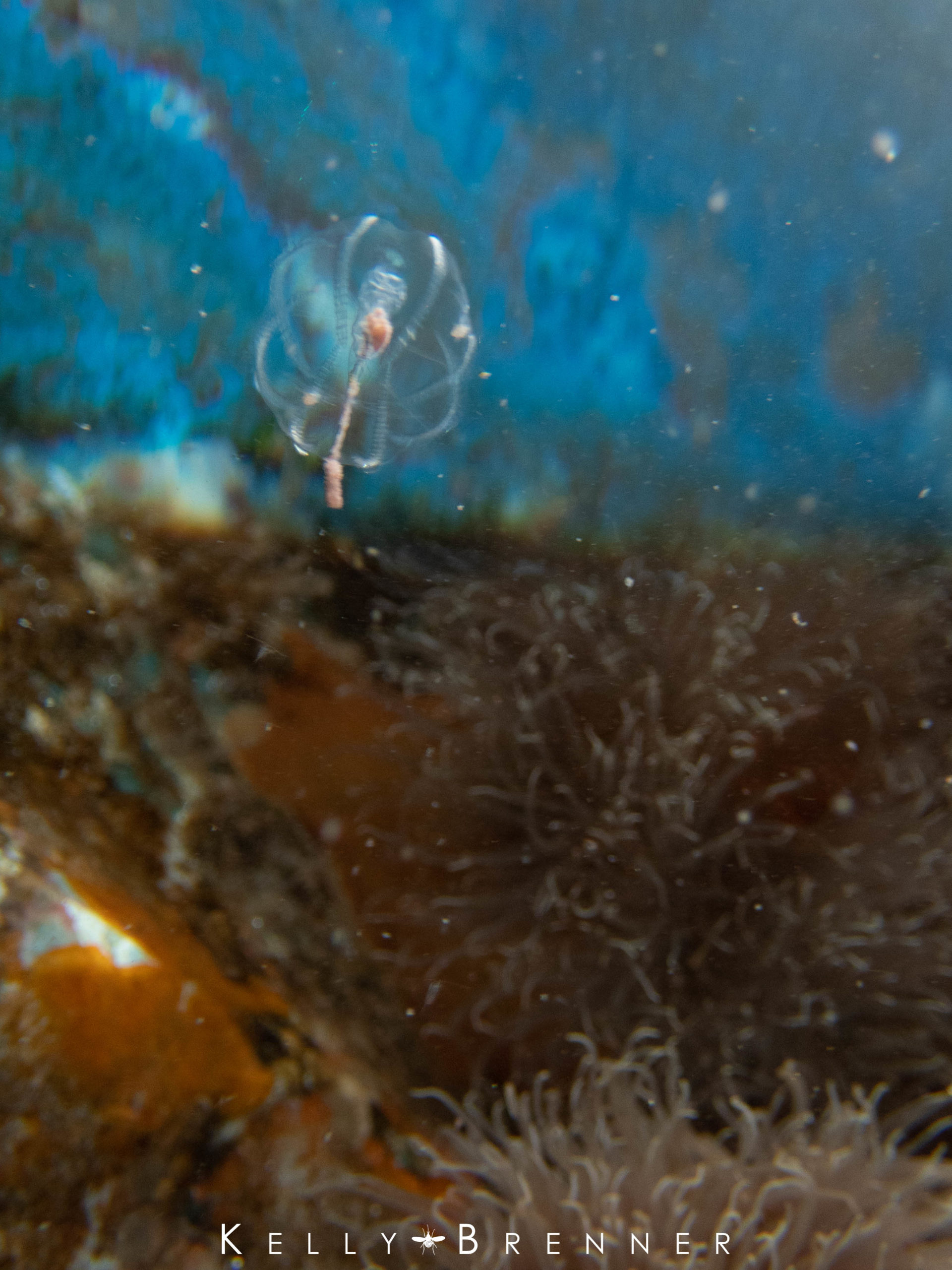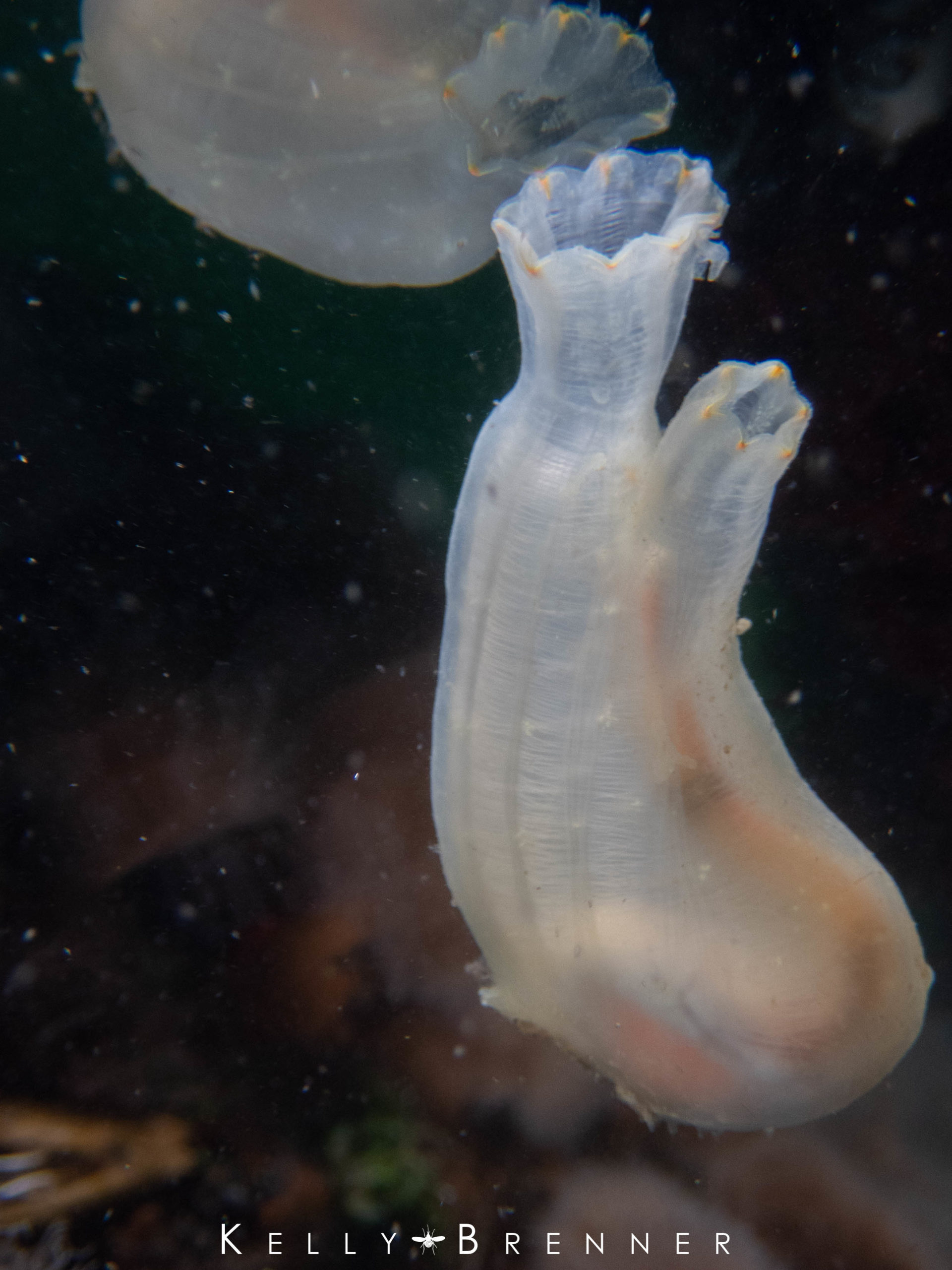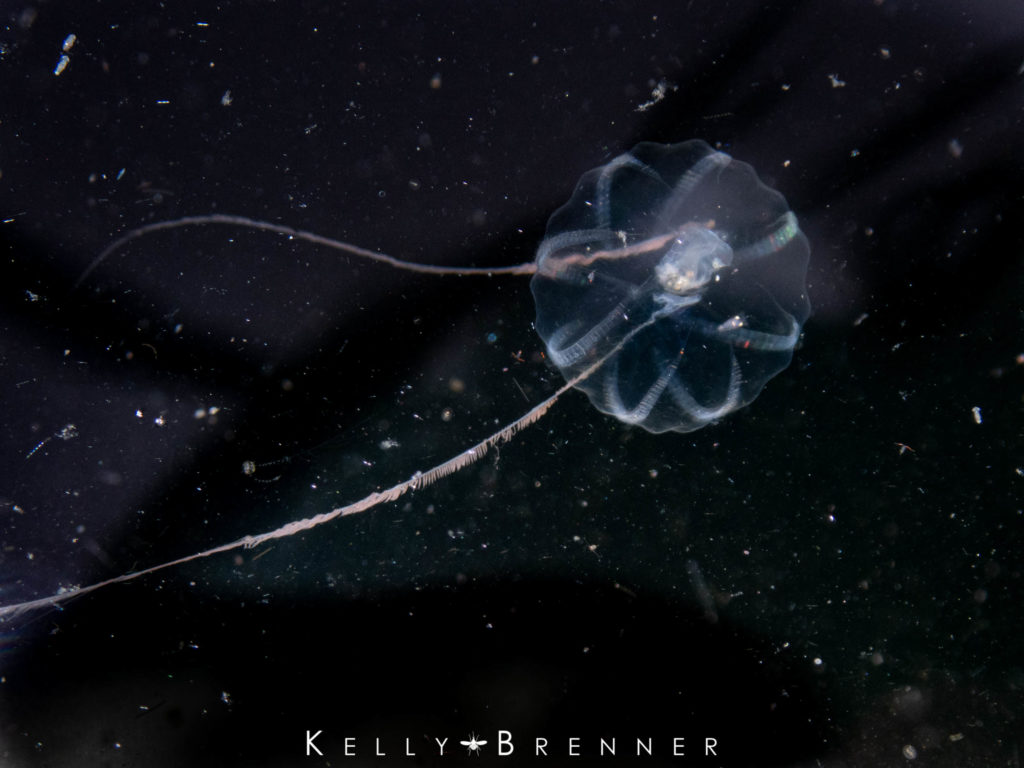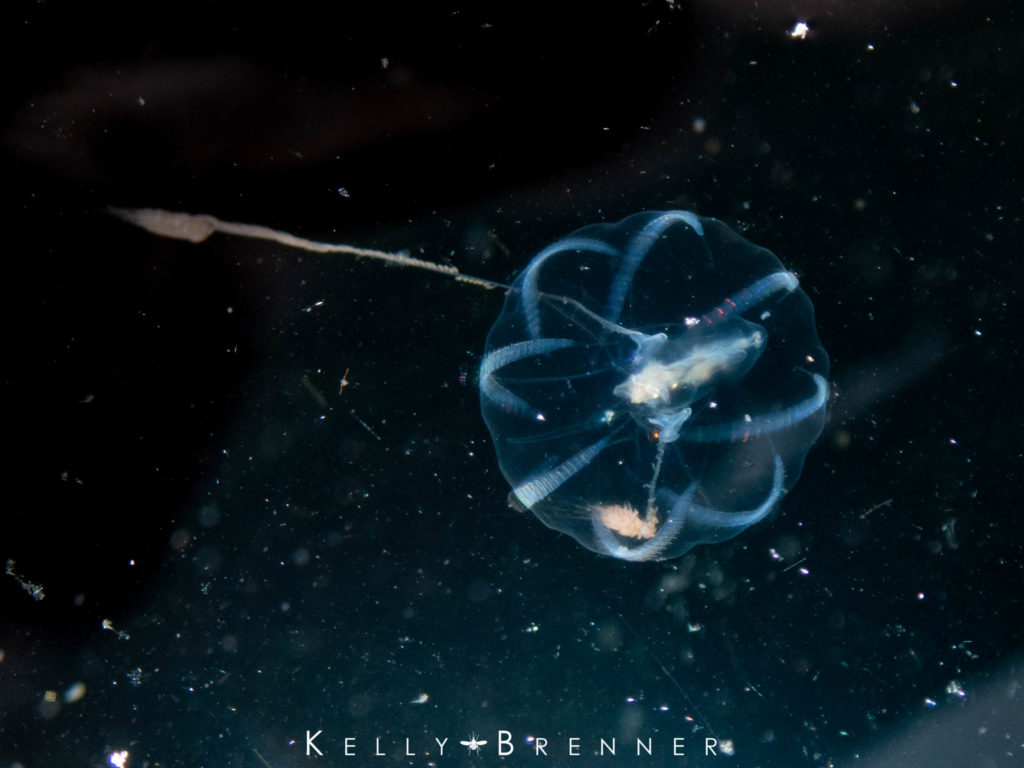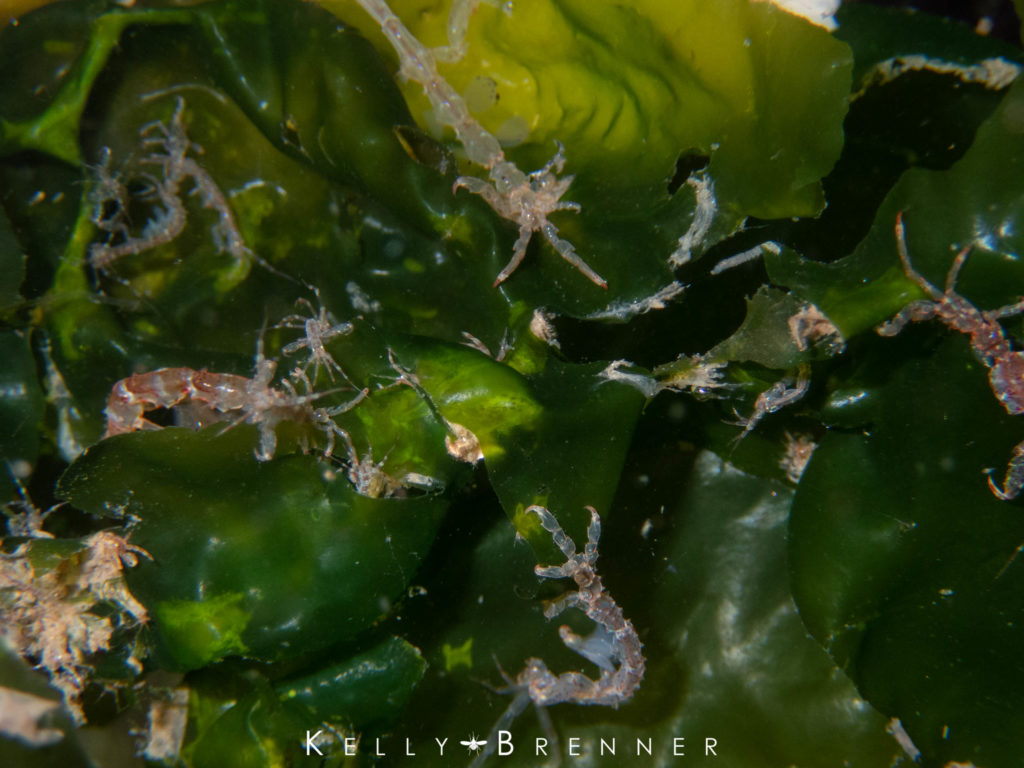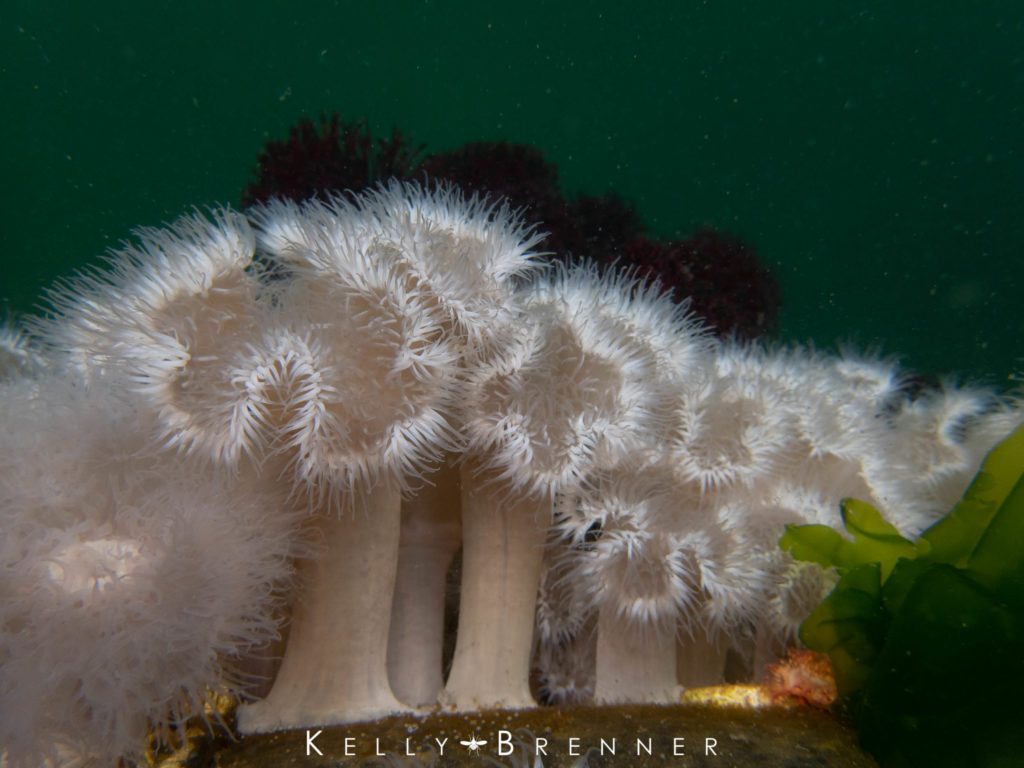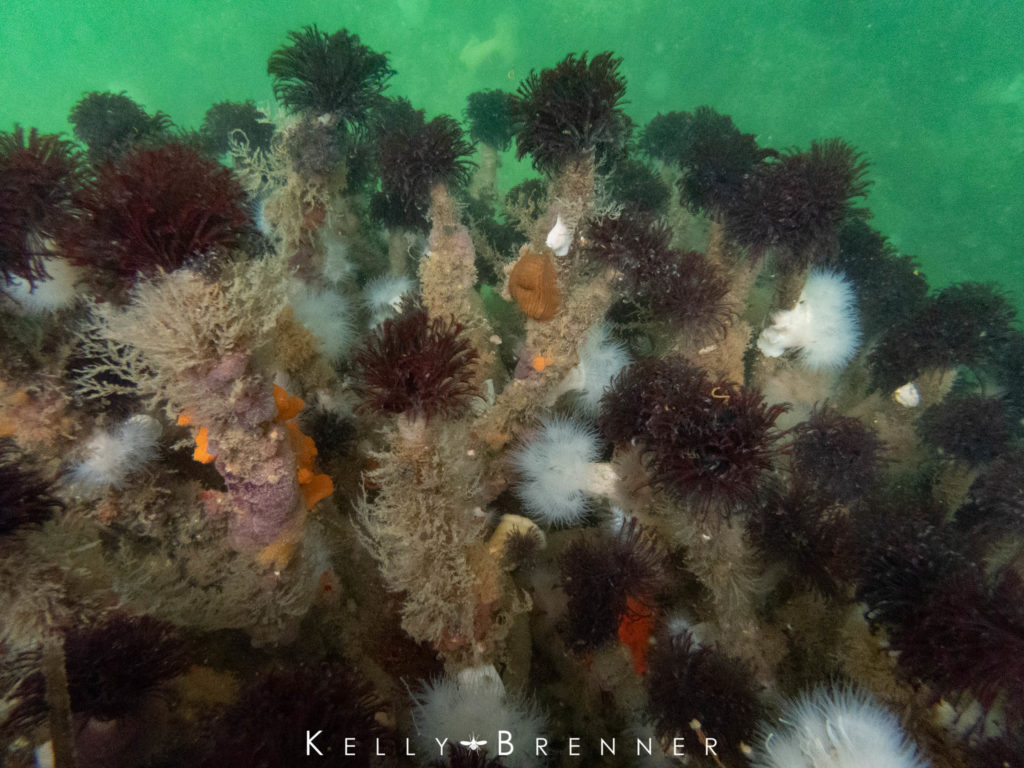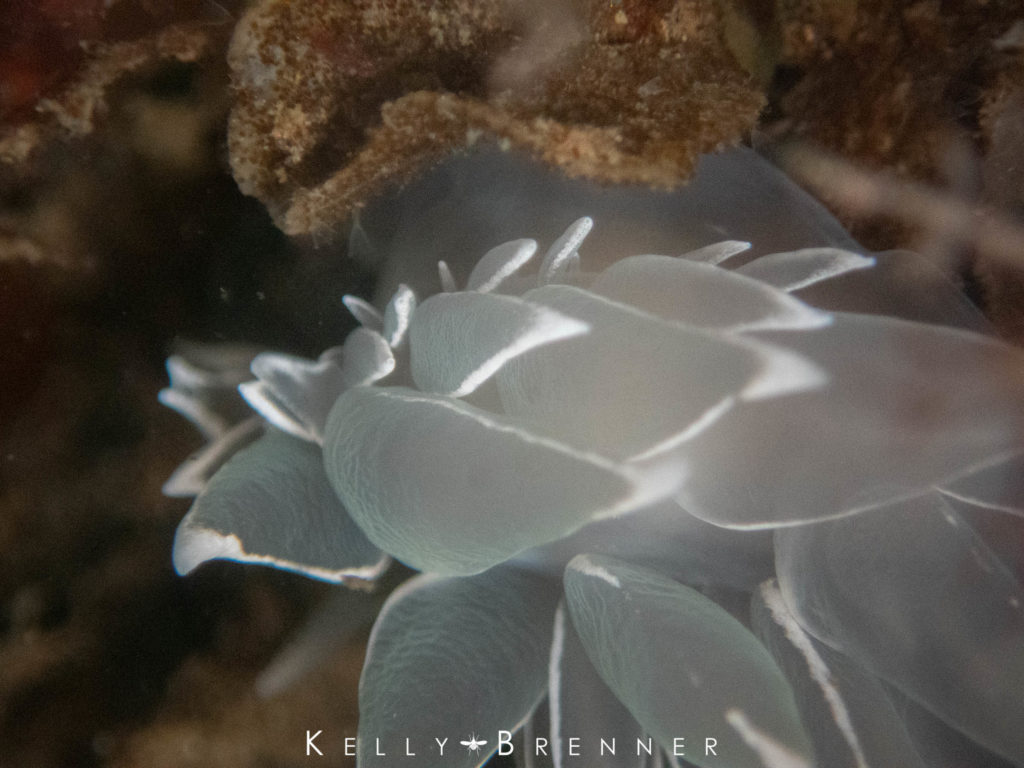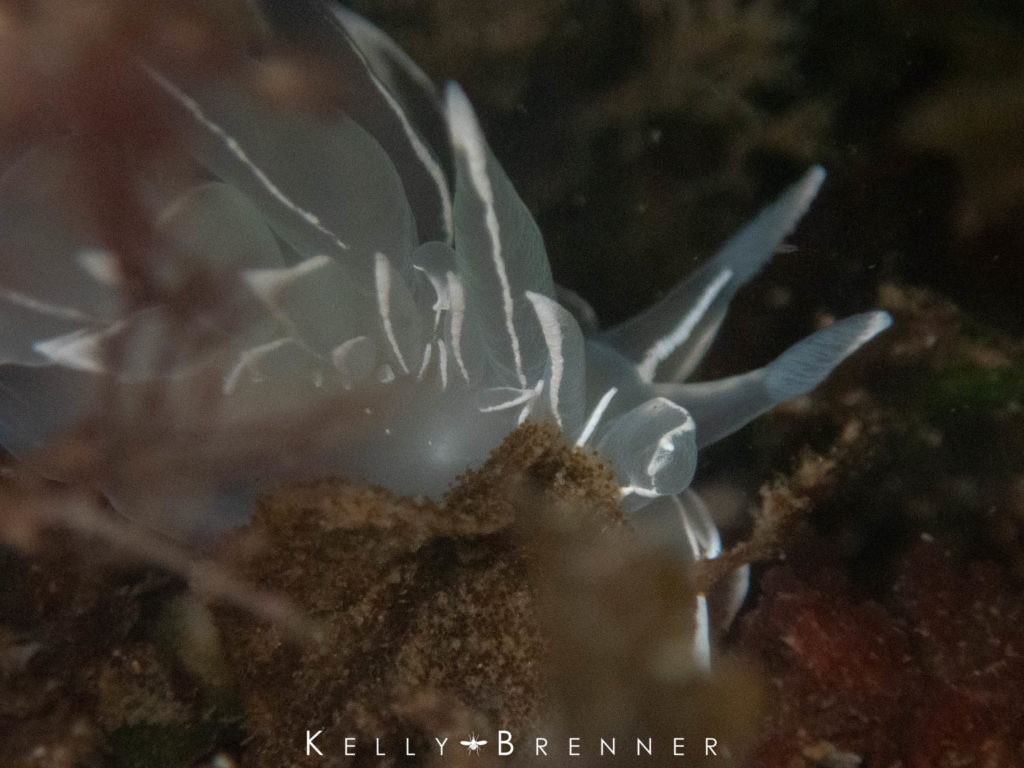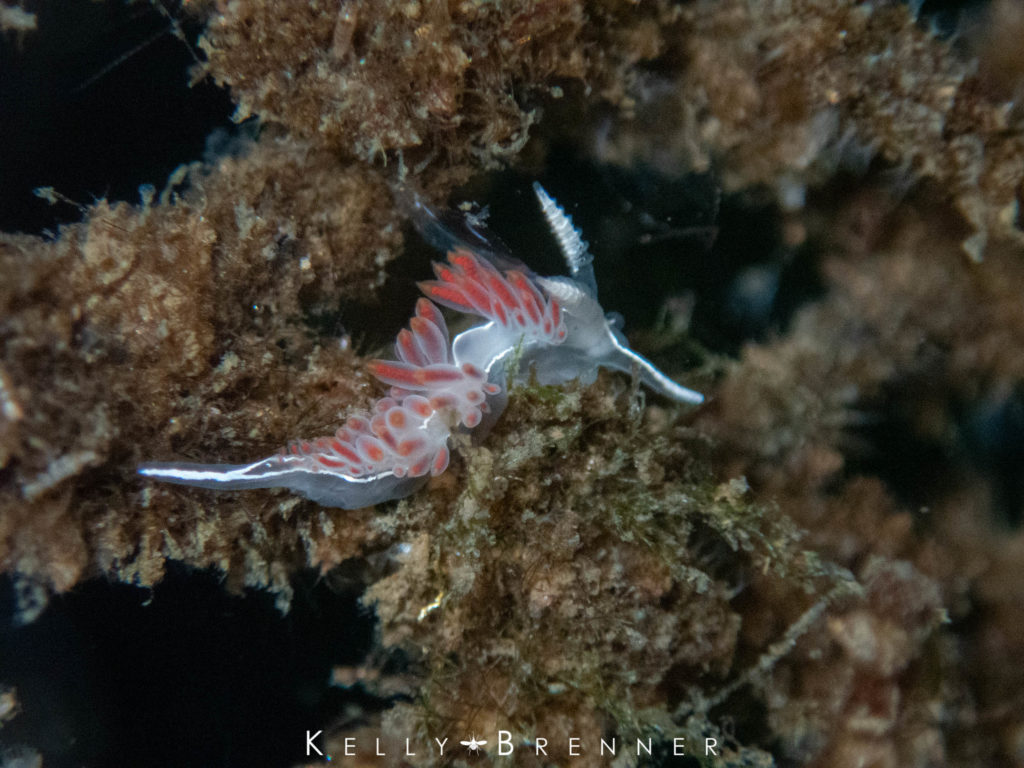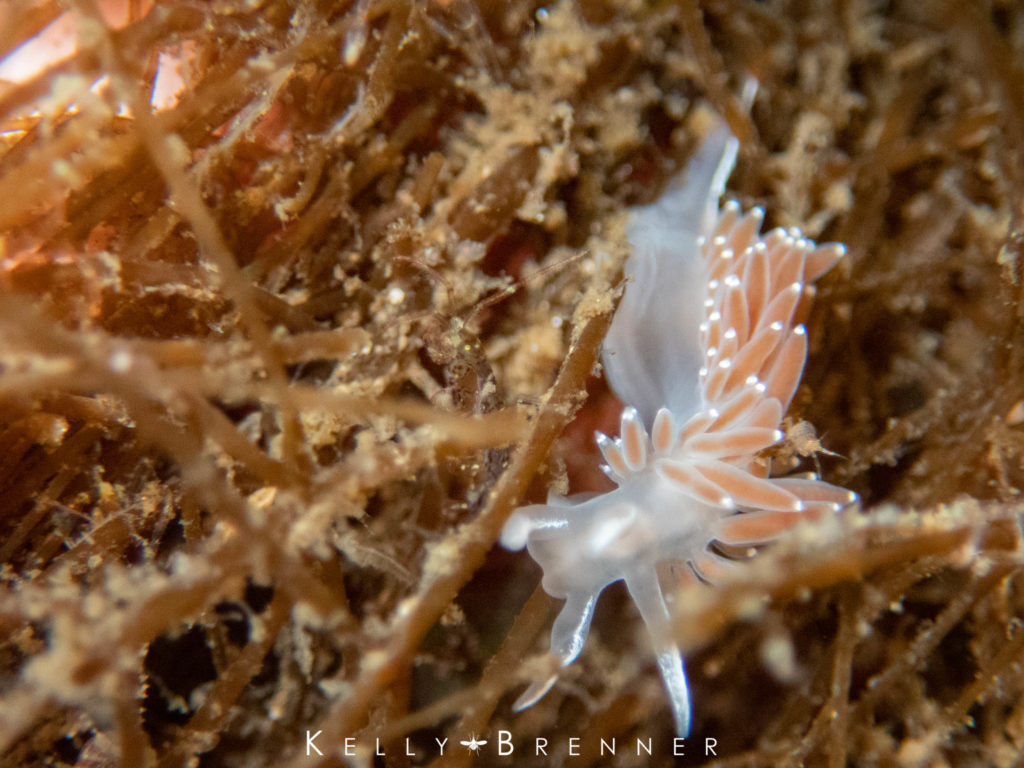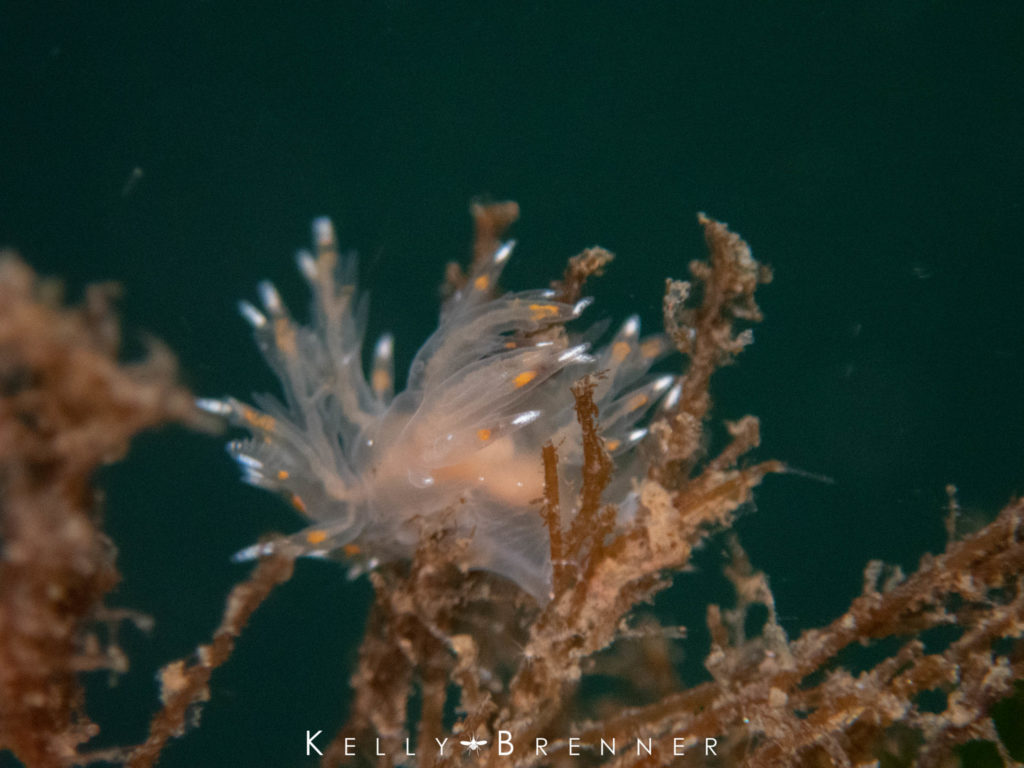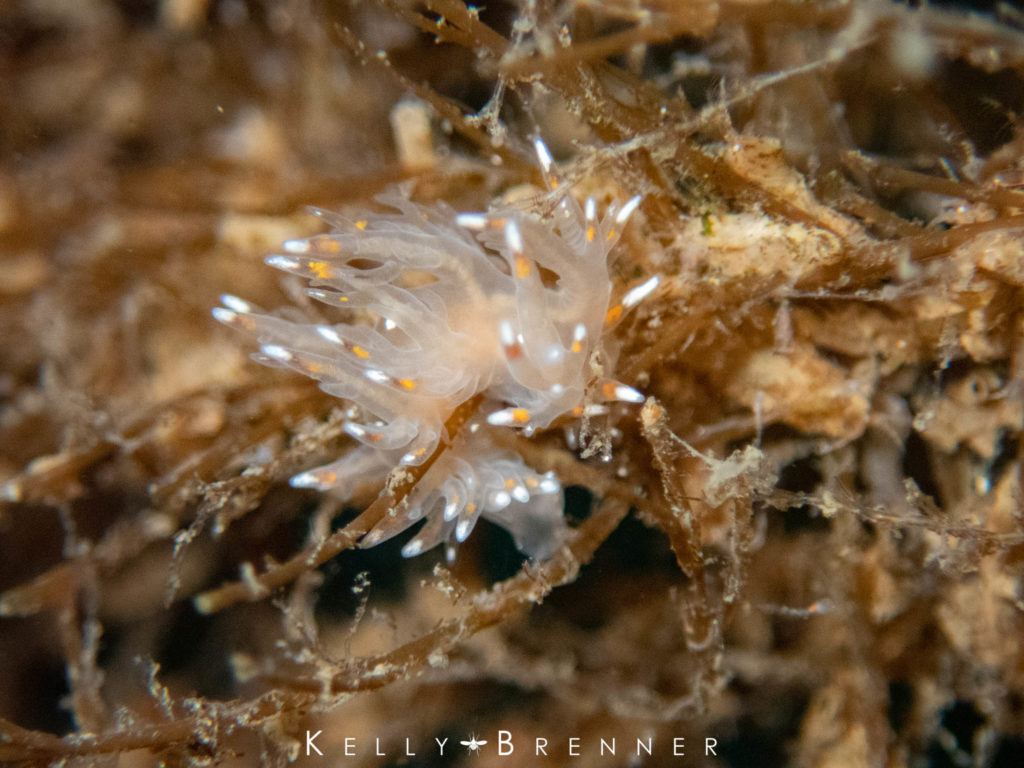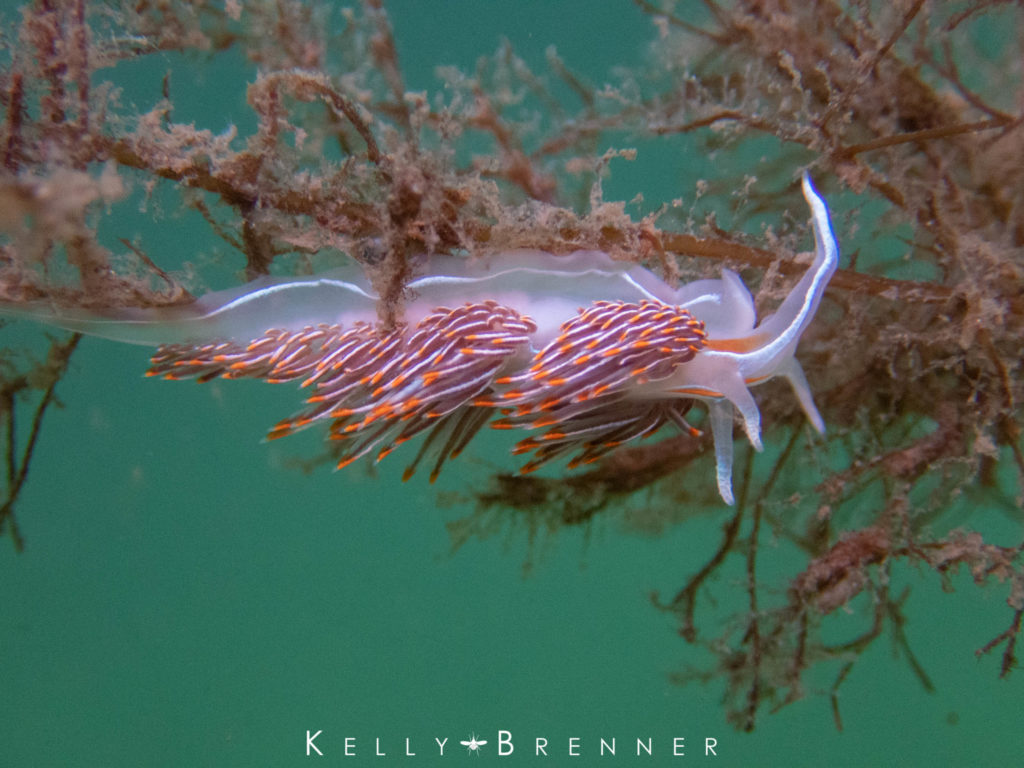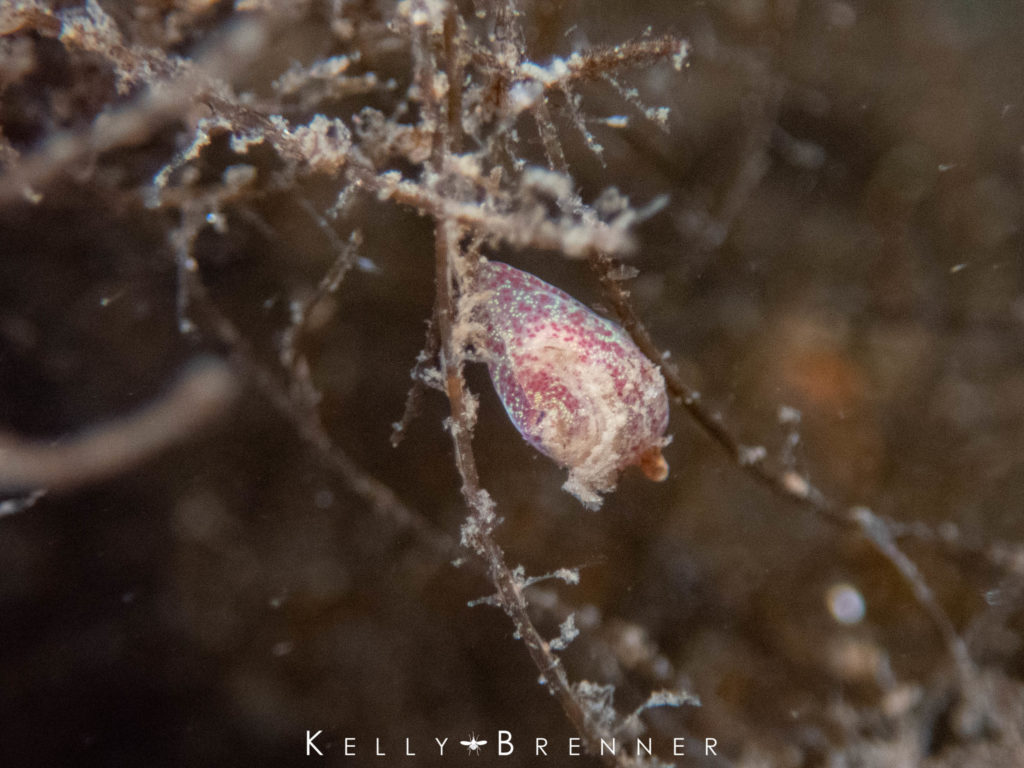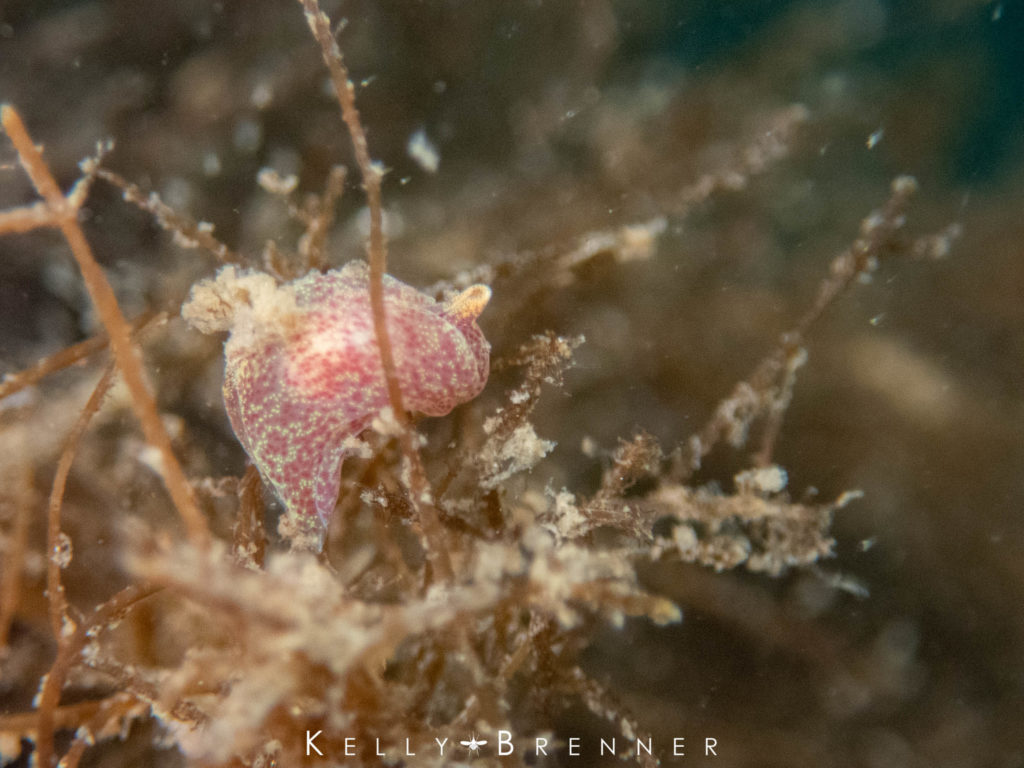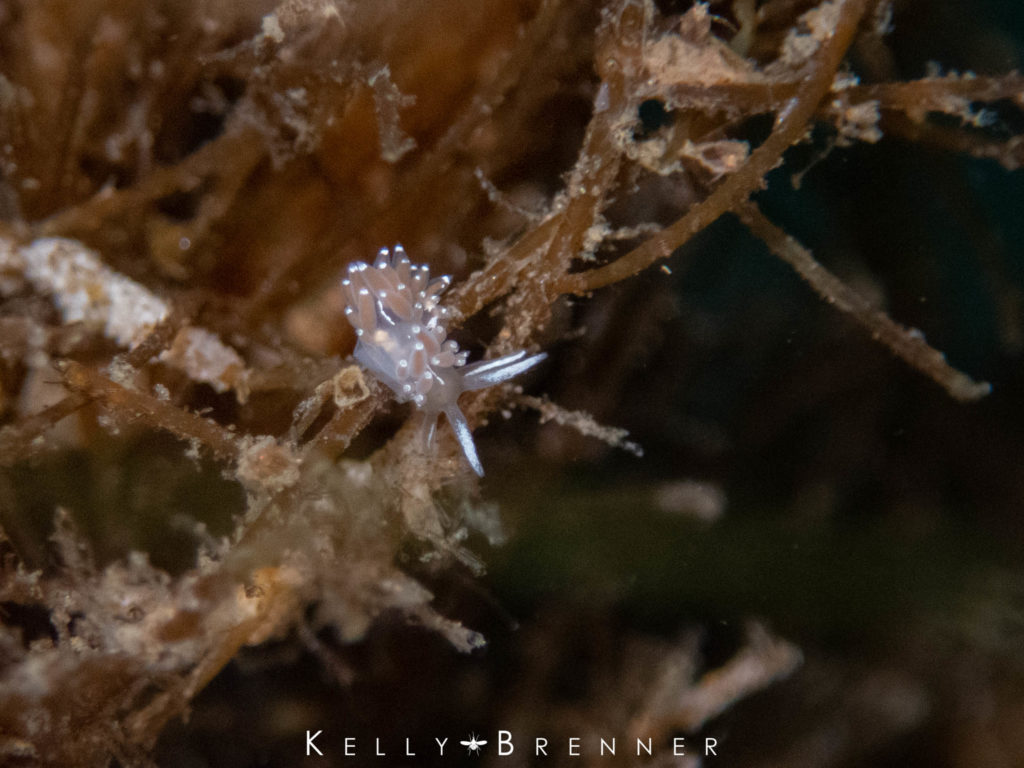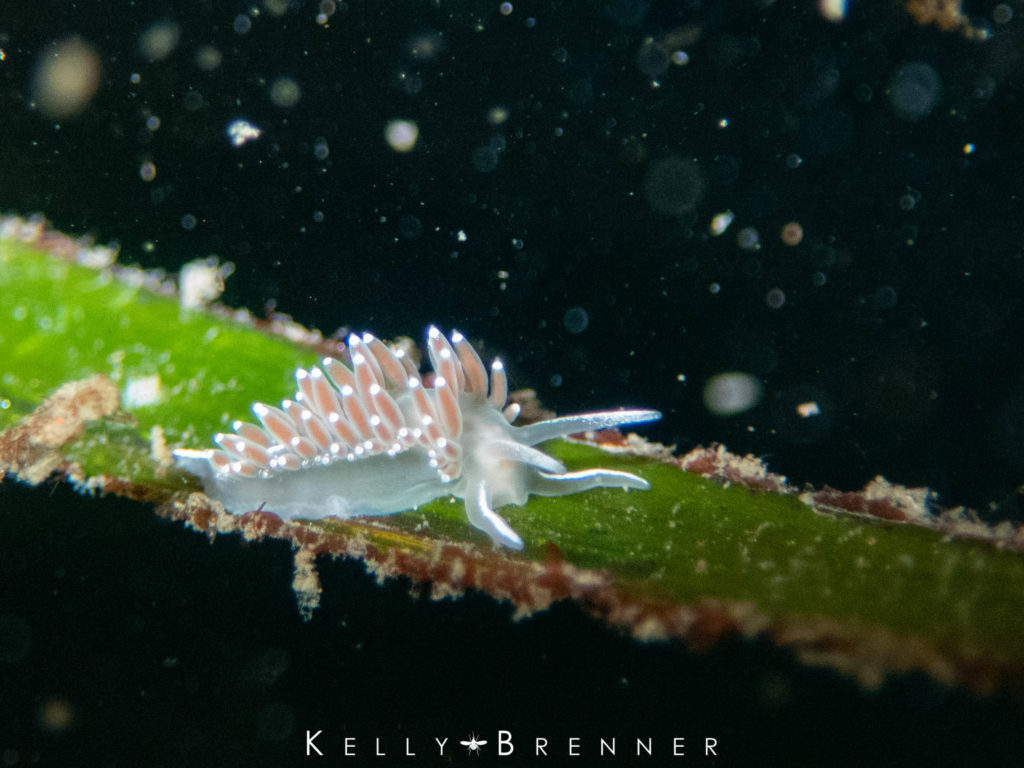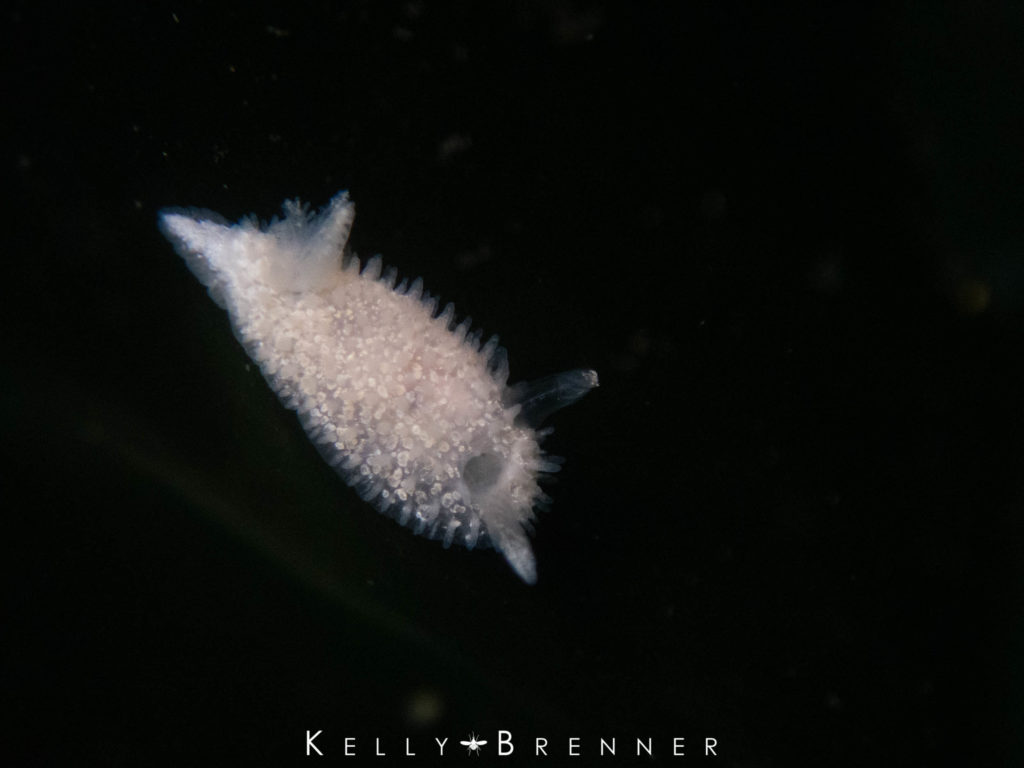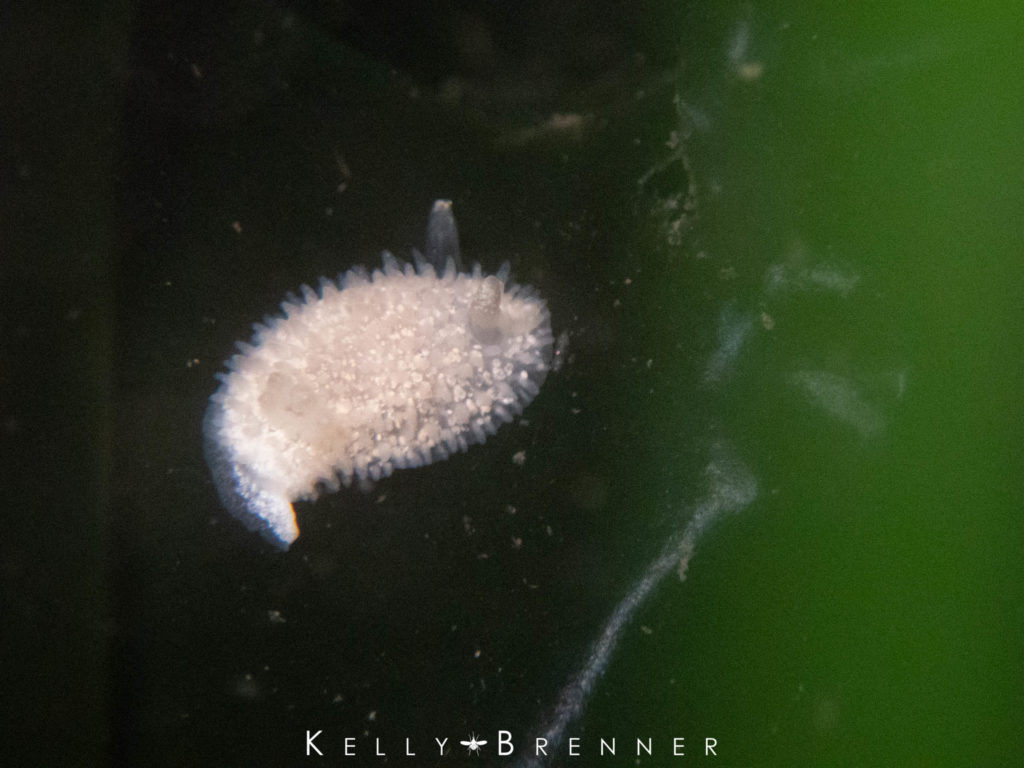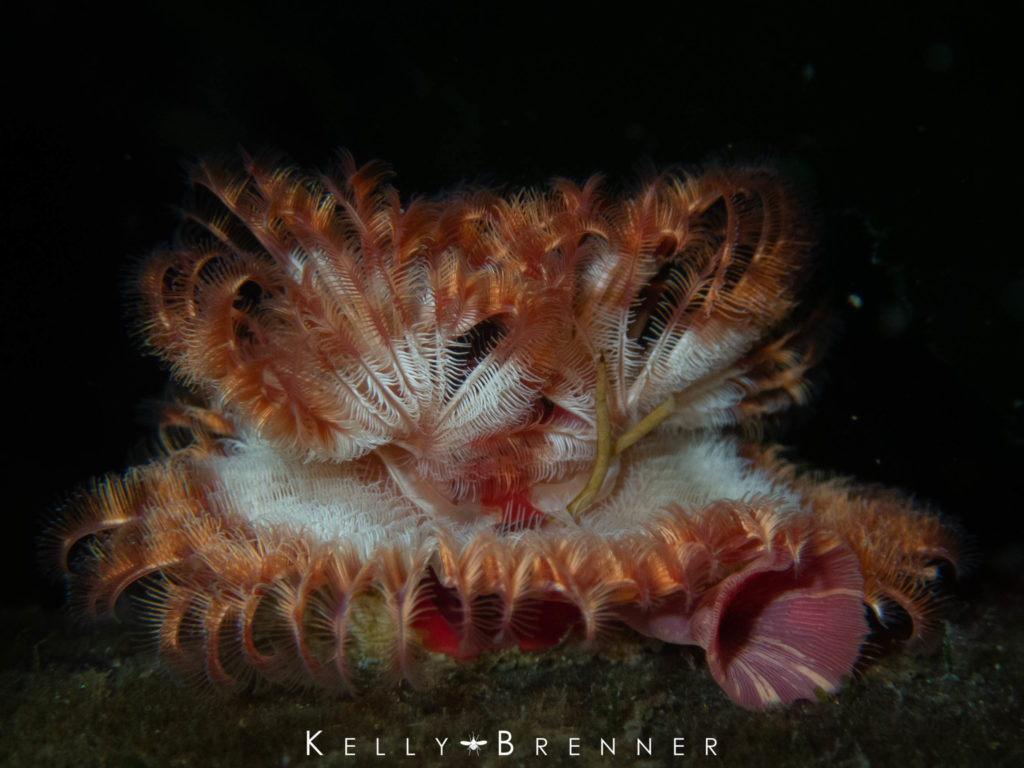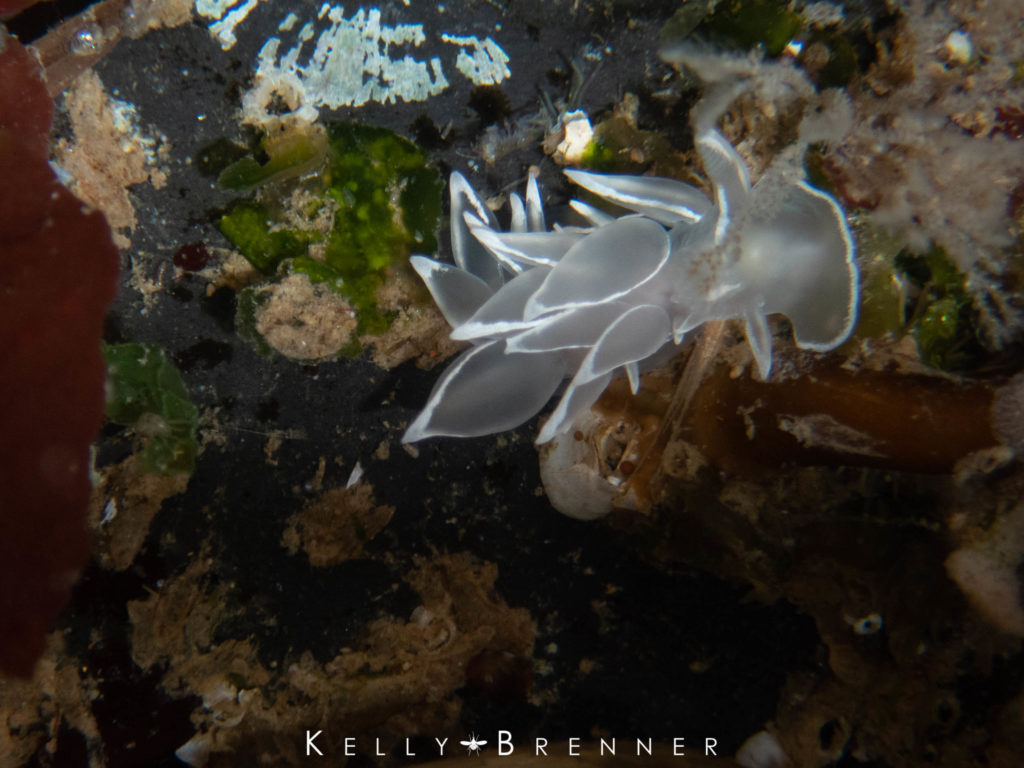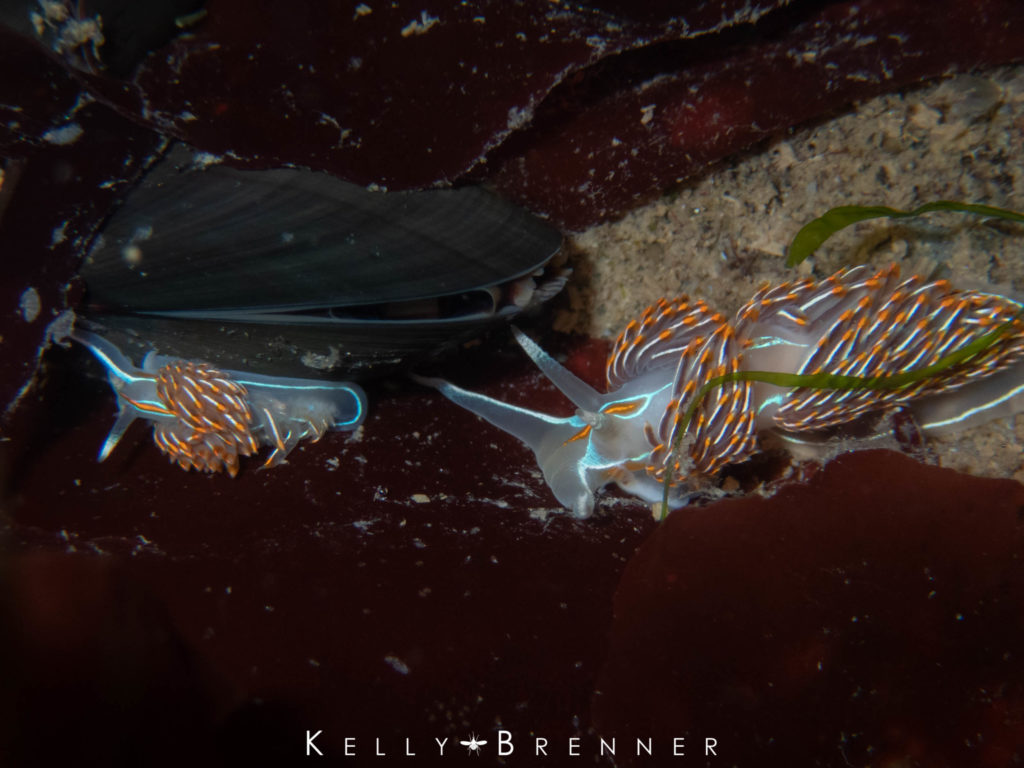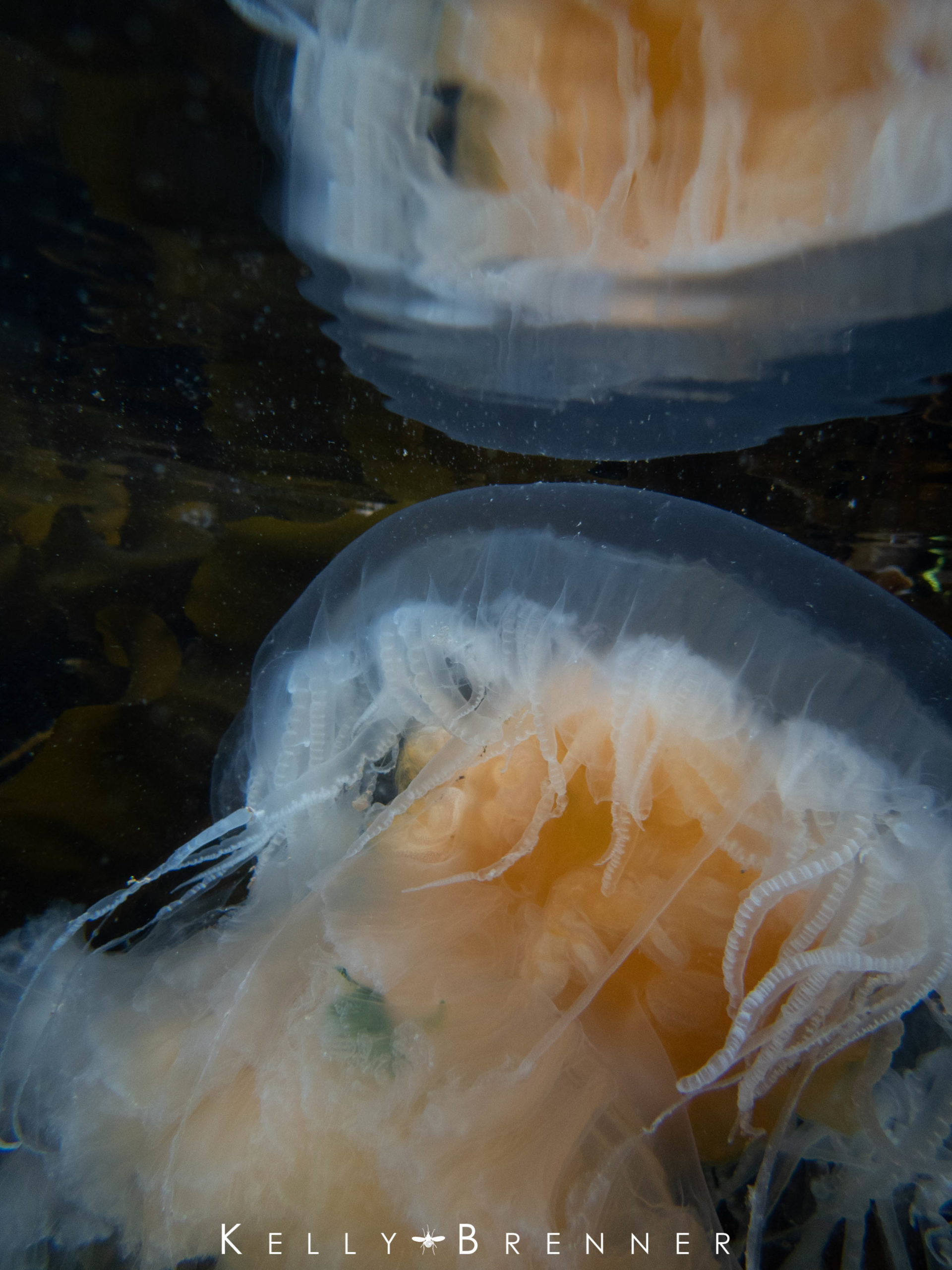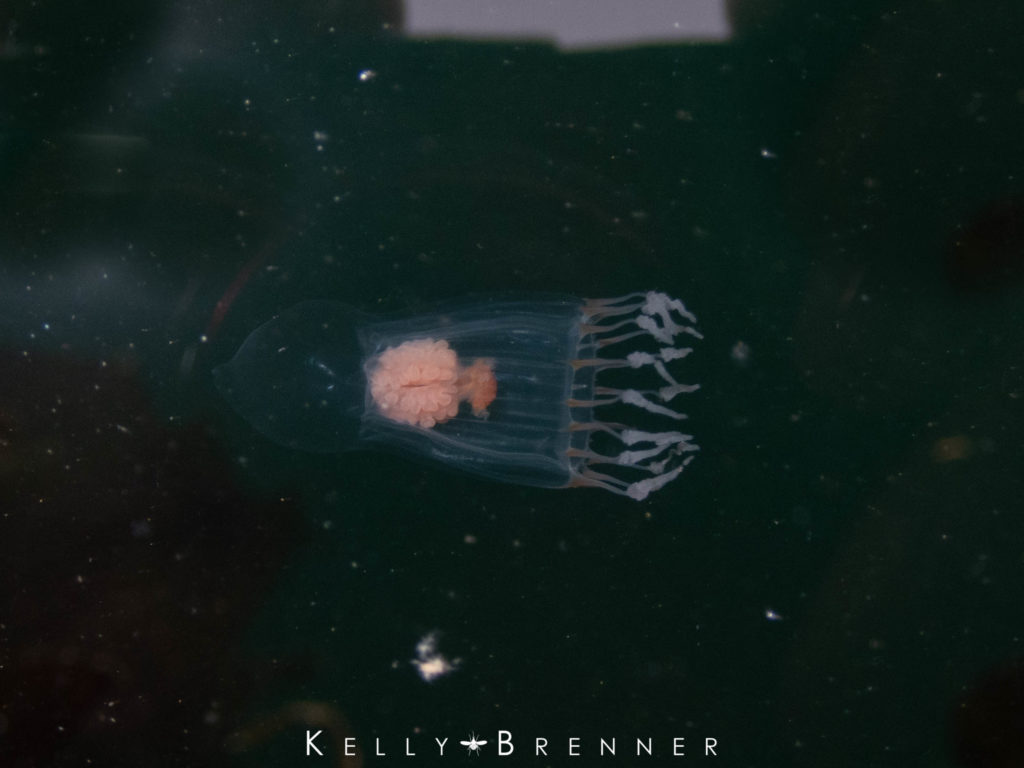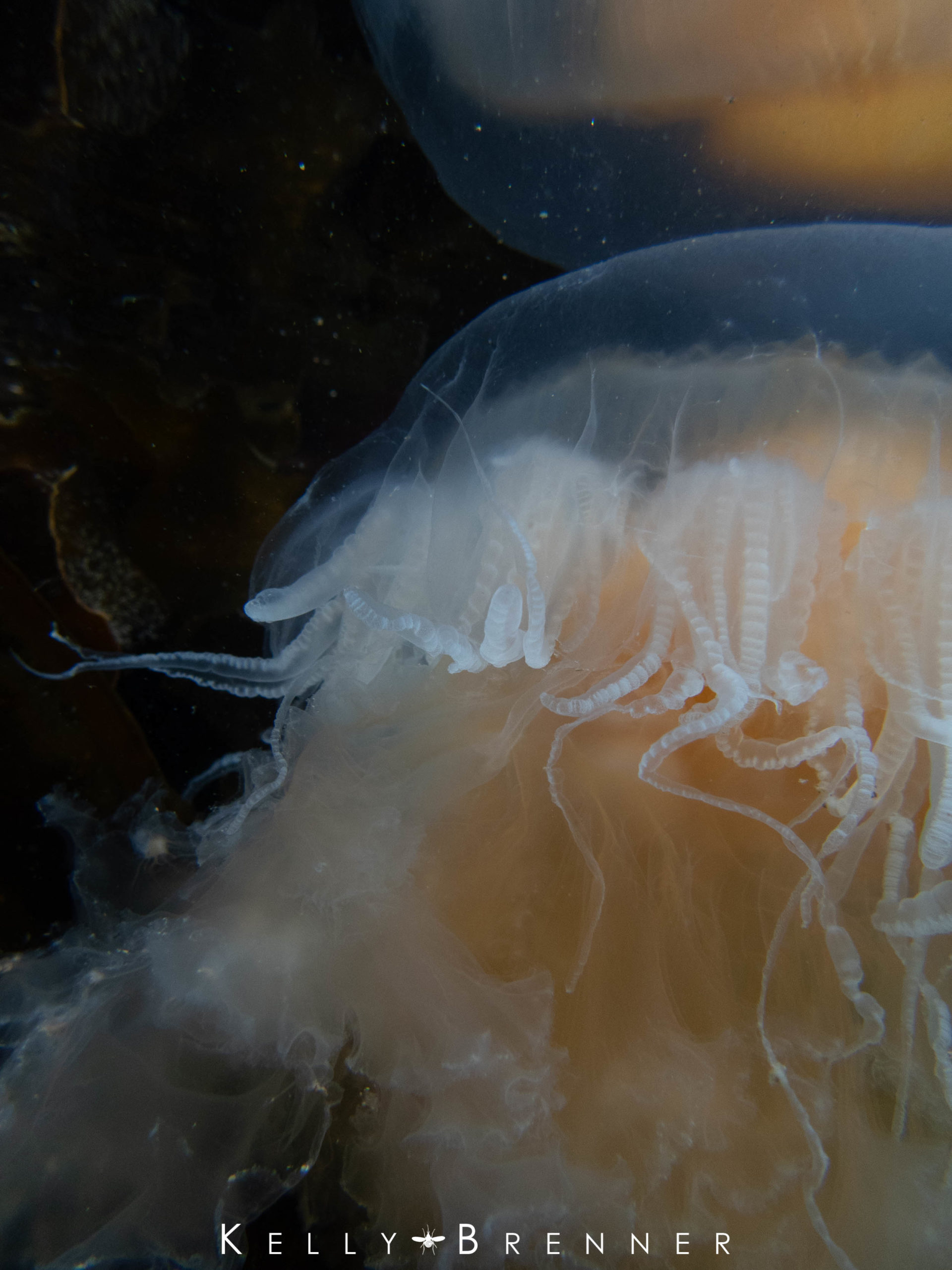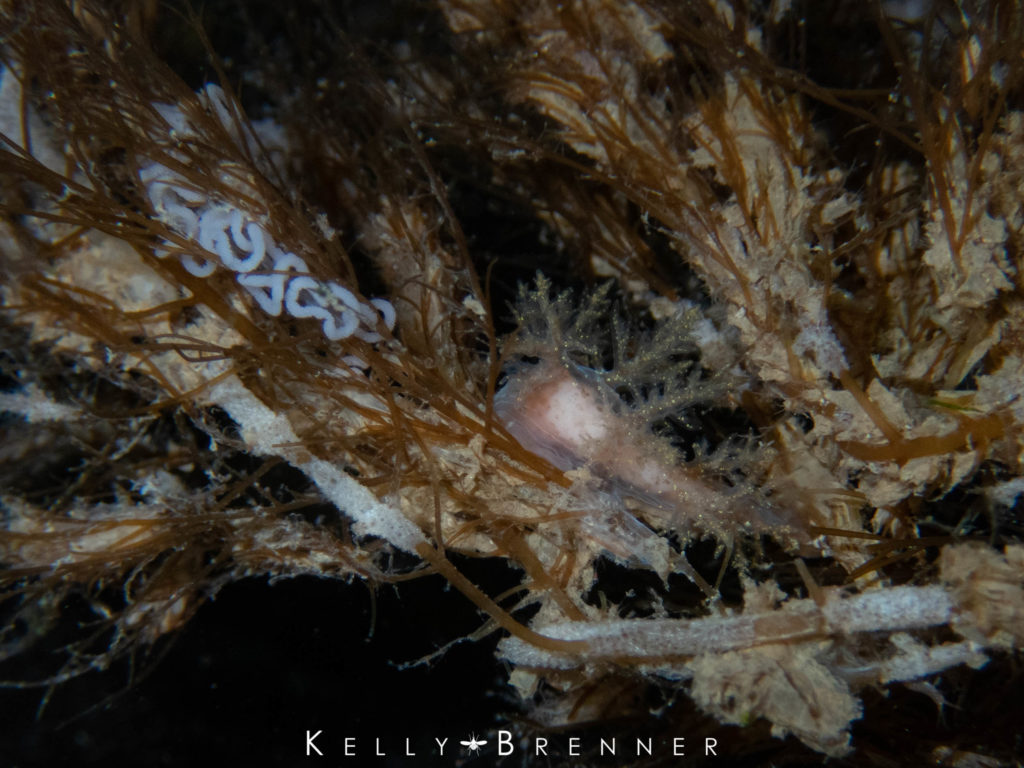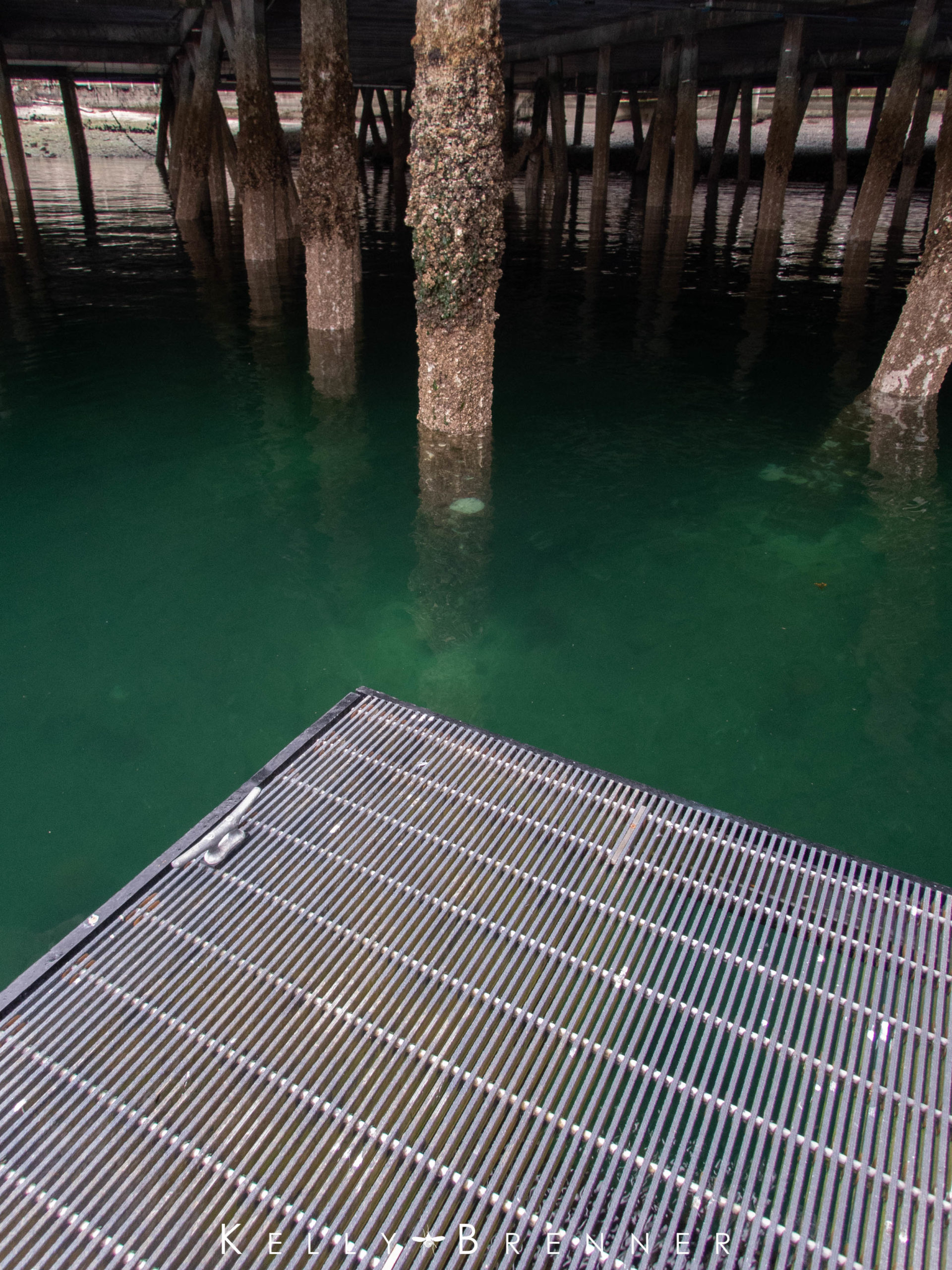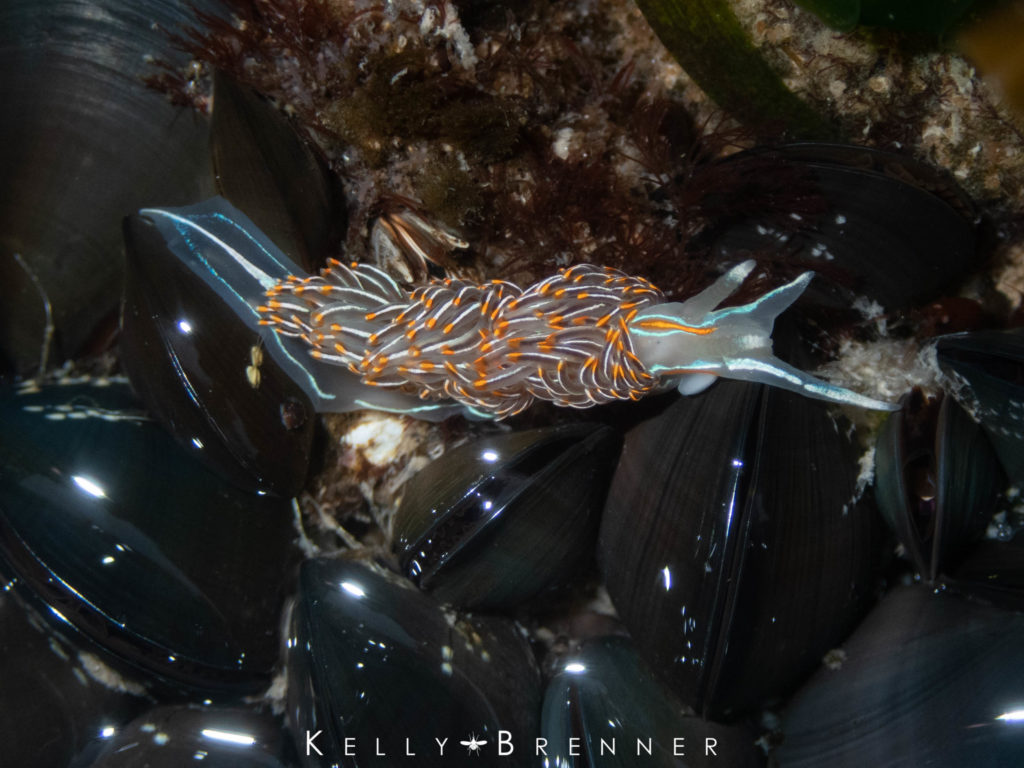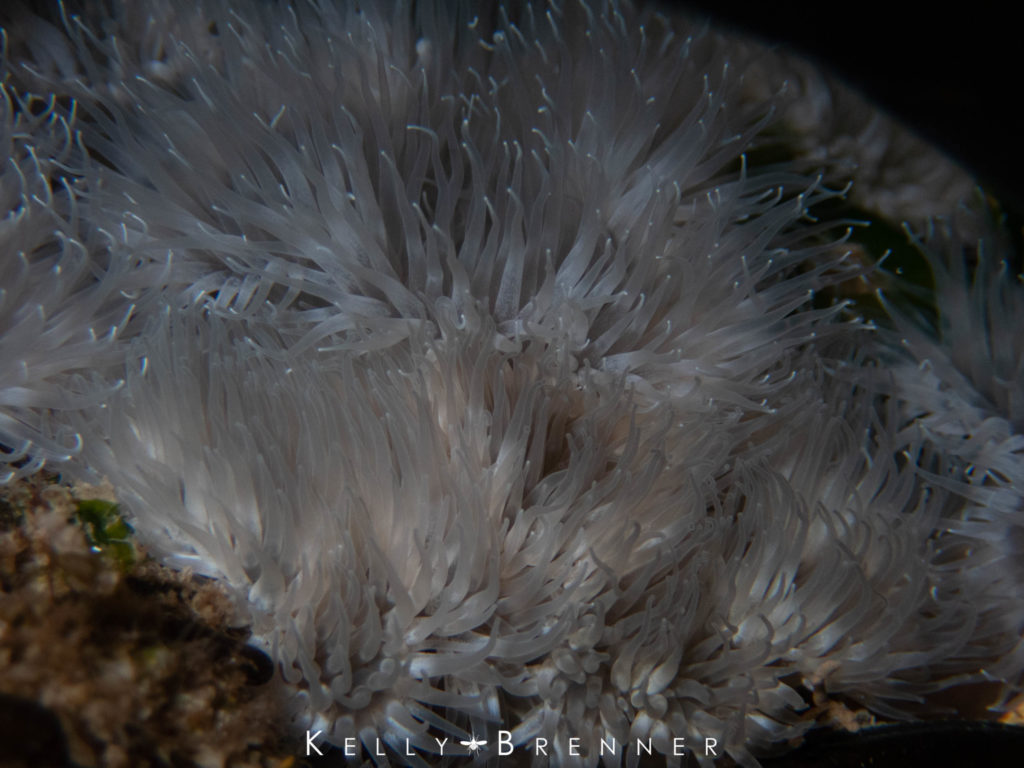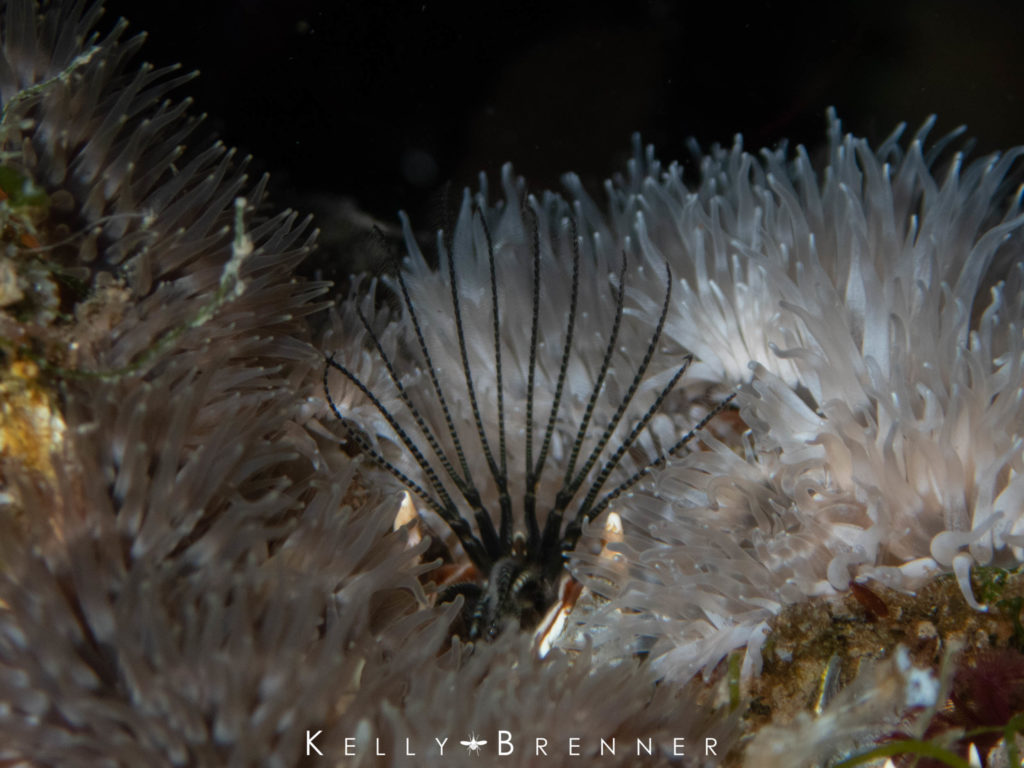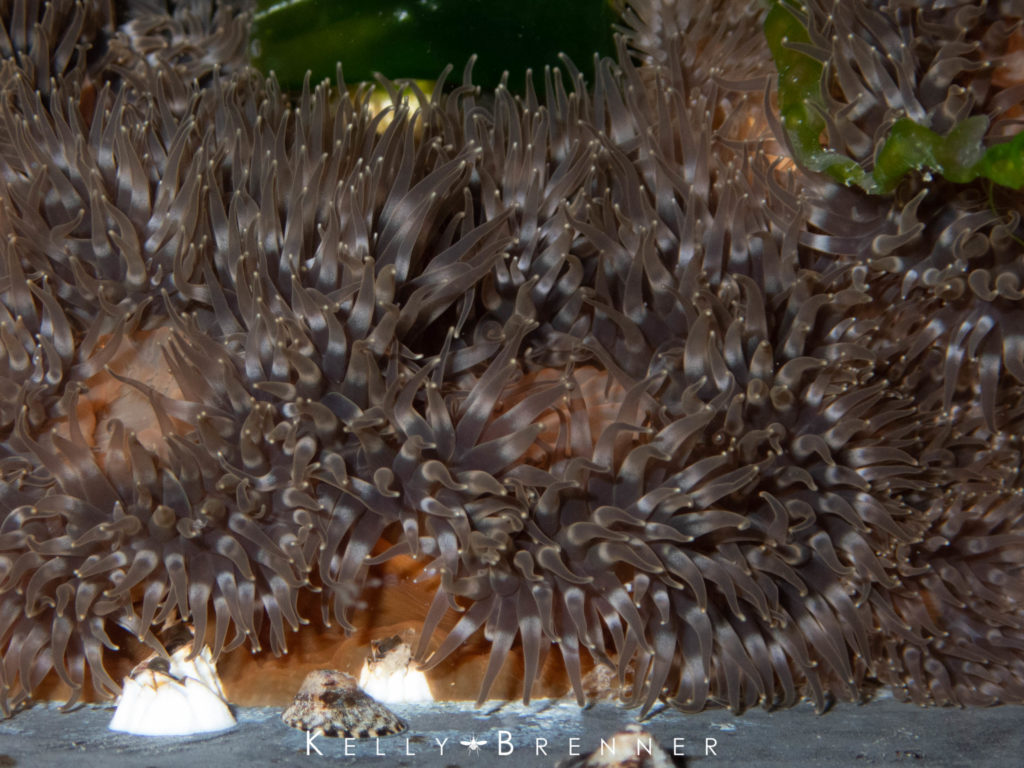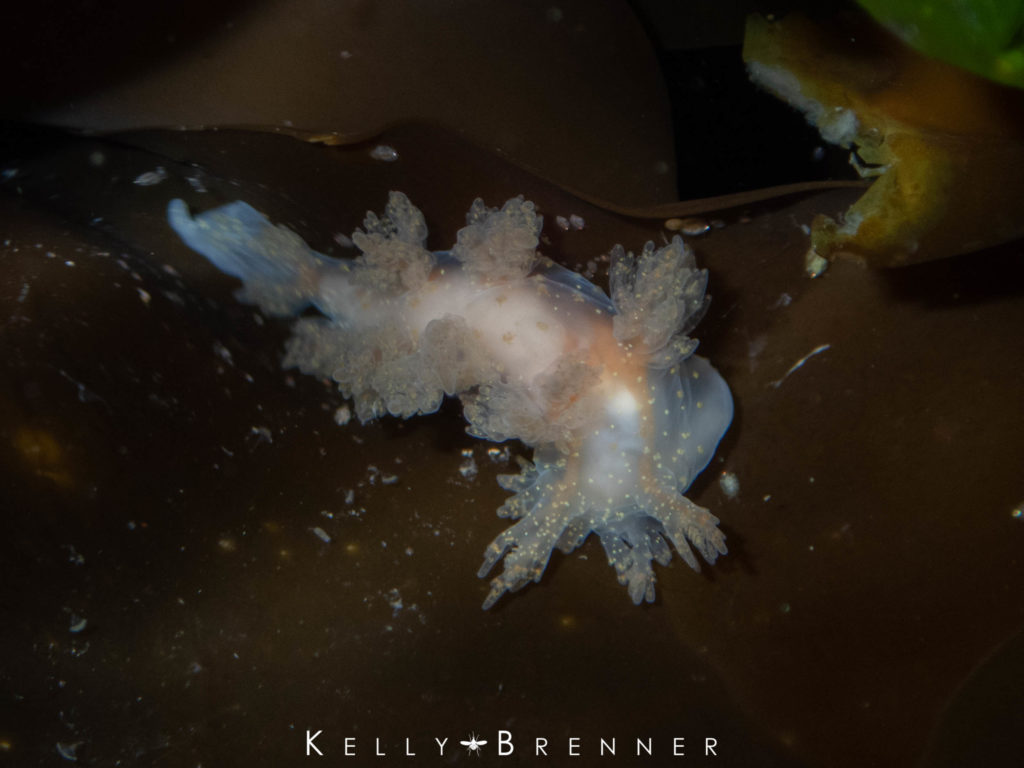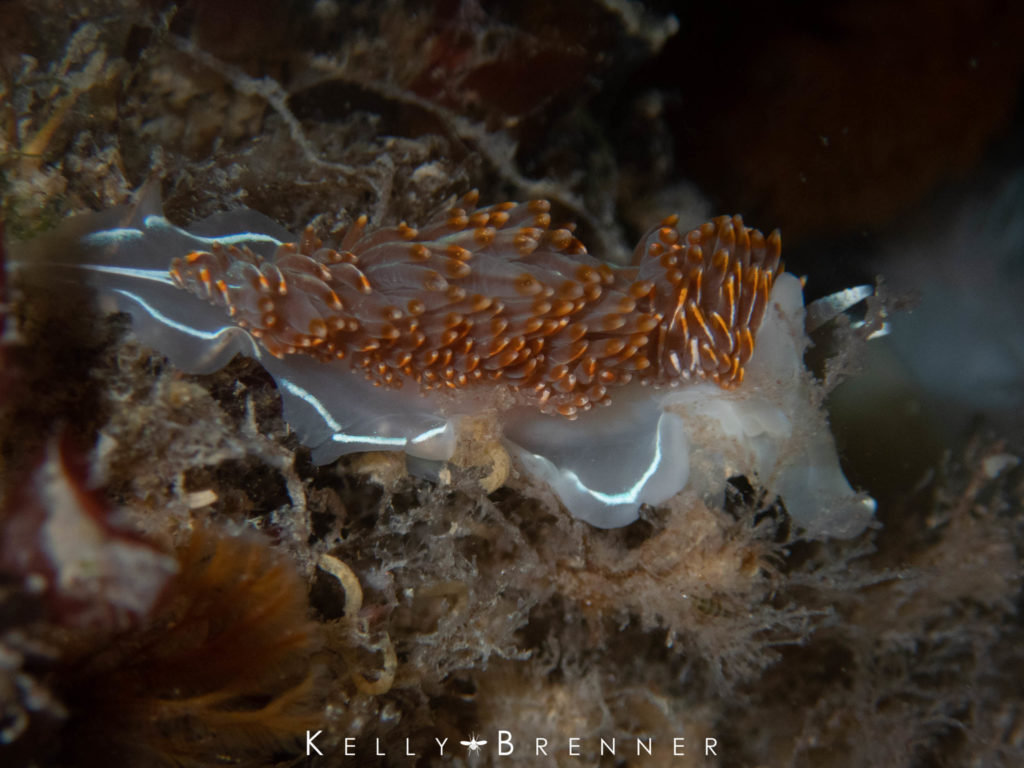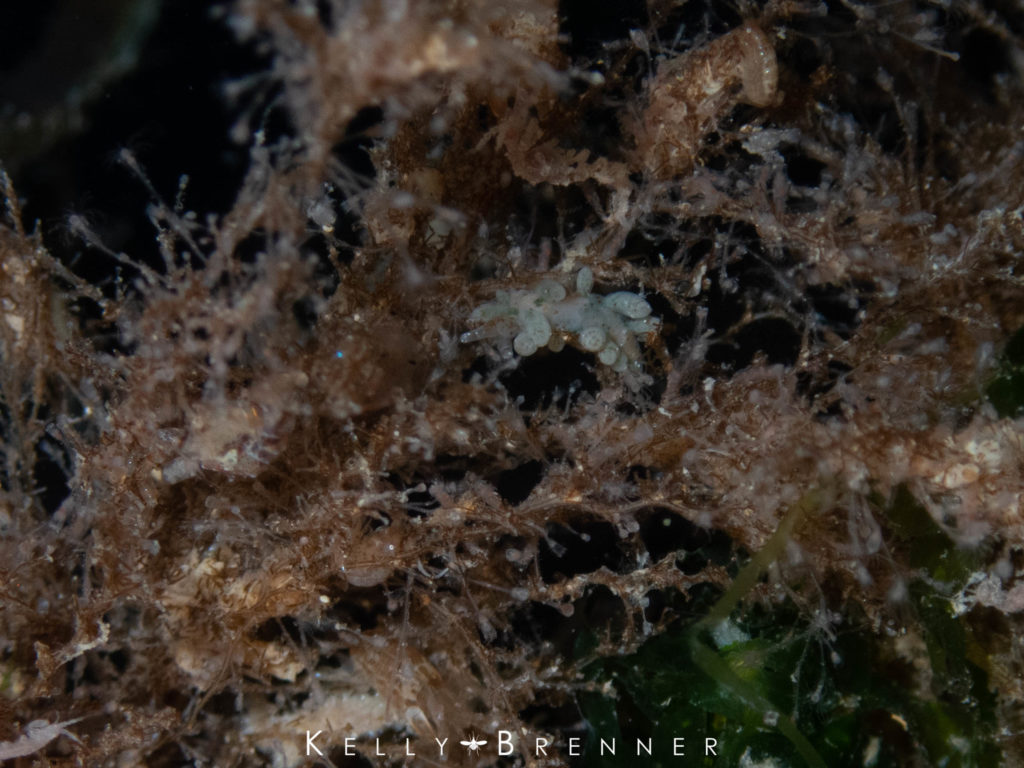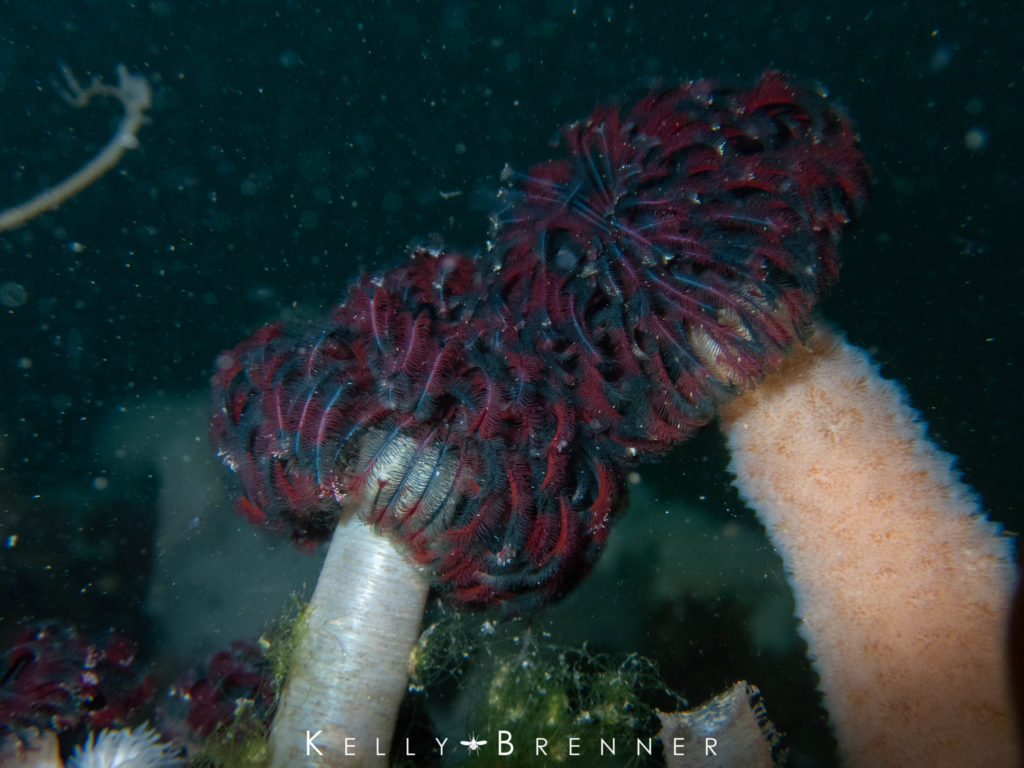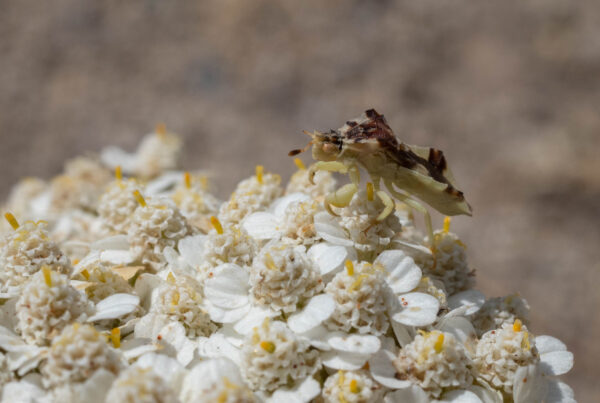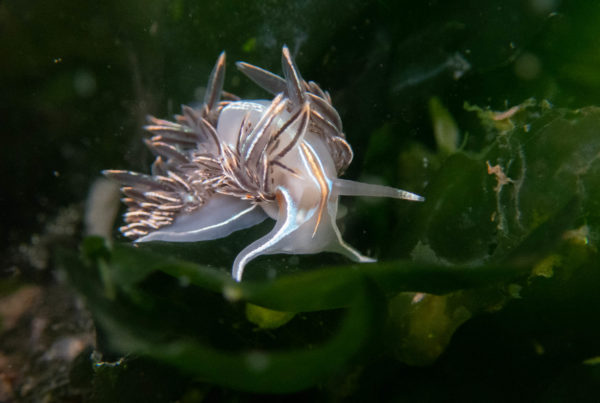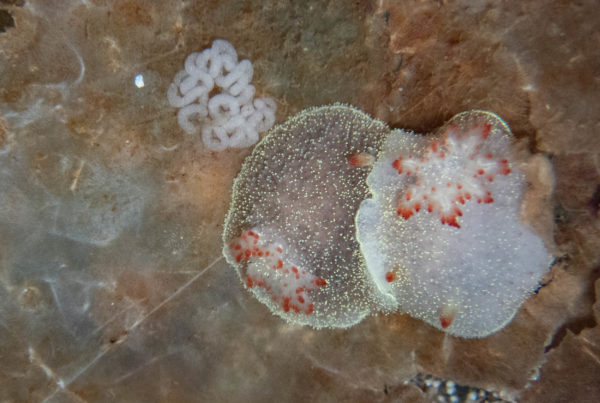Everyone knows docks are for boats. Except, lay down on your belly on a floating dock and hang your head over the side. Take a look at what you find. Down under the surface lives a magical and complex underwater garden. Few people ever bother to look under the surface they walk on, but I was fortunate to get introduced to Luan Roberts who has been looking under floating docks all around Puget Sound for about a year. Luan’s website, Nature Lookings, is a wealth of information, including a page all about dock fouling. Biofouling is when organisms settle on human created structures, like docks, boats, piers and so on. So dock fouling is looking at all the marine life that lives on the docks. It’s my new favorite hobby, and I’ve been lucky to go with Luan a couple of times to learn more about it.
One of the biggest benefits of dock fouling is there is no need to wait for low tide. It doesn’t matter what the tide is because the docks float and the marine organisms are always accessible. Of course there are days when it’s too windy and the waves make it hard to see, but generally, it’s possible to go anytime. There is a tremendous amount of life living on the docks. Permanent organisms are those anchored to the dock like anemones, tube worms, bryozoa, hydroids, sea weed, tunicates and such. Then there are the organisms that eat them, or use them to shelter in. Luan showed me the prized hydroids that often contain a multitude of nudibranchs, some of them so tiny you’d never see them unless looking for them.
I’ve visited a handful of docks now (with more to come) and each is a little different with a different compliment of sea life, although there is a lot of similarities. Not only are docks different from one location to the next, but they’re different month-to-month as well. Nudibranchs are seasonal, and one month might yield absolutely none of a certain species and the very next, they might be everywhere. I plan to return to certain docks throughout the year to experience this seasonal change, just like Luan has been doing.
Over my few visits to docks, I’ve seen many nudibranch species and been treated to close encounters with jellies, tunicates, enormous plumose anemones, fish, skeleton shrimp and even a seal that swam right underneath me. At one marina comb jellies, also called sea gooseberries, were abundant, their ciliate creating rainbows underwater. At another marina, a fried egg jelly pulsed right next to the dock, allowing me to get spectacular photos.
Of course, my main goal, as usual, is to find nudibranchs. Many of the dock nudibranchs are small, but they are there, and sometimes in huge numbers. I’ve seen Thick-horned Nudibranchs (Hermissenda crassicornis), Stubby Dendronotus (Dendronotus subramosus), Frosted Dironas (Dirona albolineata), Green Balloon Aeolid (Eubranchus rupium), Porcupine Dorid (Diaphorodoris lirulatocauda), Red-fingered Coryphella (Coryphella verrucosa), Rainbow Dendronotus (Dendronotus iris), Three-lined Aeolid (Orienthella trilineata) and Pacific Stomach Wing (Gastropteron pacificum) which is not a nudibranch, but it is a sea slug – and one that swims!

